Biden welcomes Indian Prime Minister Modi for state visit
Modi's trip to Washington, though, isn't without controversy.
President Joe Biden rolled out the red carpet Thursday for Prime Minister Narendra Modi of India for the third state visit of his presidency.
The visit will put on full display the "deep and close partnership" between the U.S. and India, the White House said, despite concerns India's democratic principles have eroded under Modi's leadership.
The relationship has been described by Biden as "one of the most important" of this century as the U.S. rebalances its foreign policy focus to the Indo-Pacific in the face of an increasingly aggressive China. Just ahead of Modi's visit, President Biden suggested Chinese President Xi Jinping was a "dictator."
"There's a strategic imperative in the region," Tanvi Madan, the director of The India Project at the Brookings Institution, told ABC News. "Multiple administrations have seen India as a geopolitical counterbalance, an economic alternative and a democratic contrast to China."
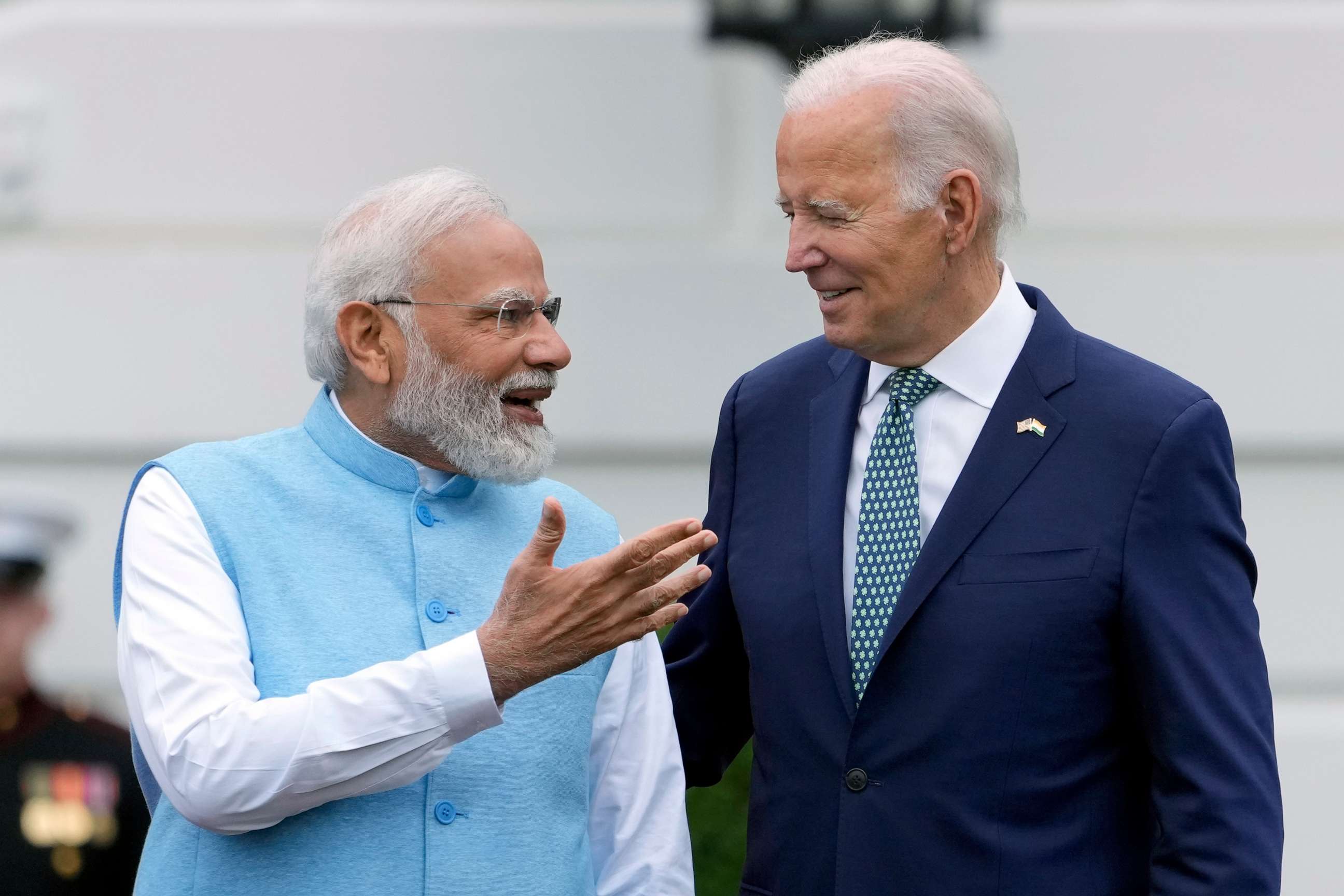
The two leaders greeted each other warmly on the South Lawn in a welcome featuring marching bands and honor guards, despite rainy weather. Vice President Kamala Harris, the first person of Indian descent in her role, and second gentleman Doug Emhoff were also there to greet the prime minister.
"The challenges and opportunities facing the world in this century require that India and the United States work and lead together, and we are," Biden said.
Modi said the partnership between the U.S. and India "will be instrumental in enhancing the strength of the whole world."
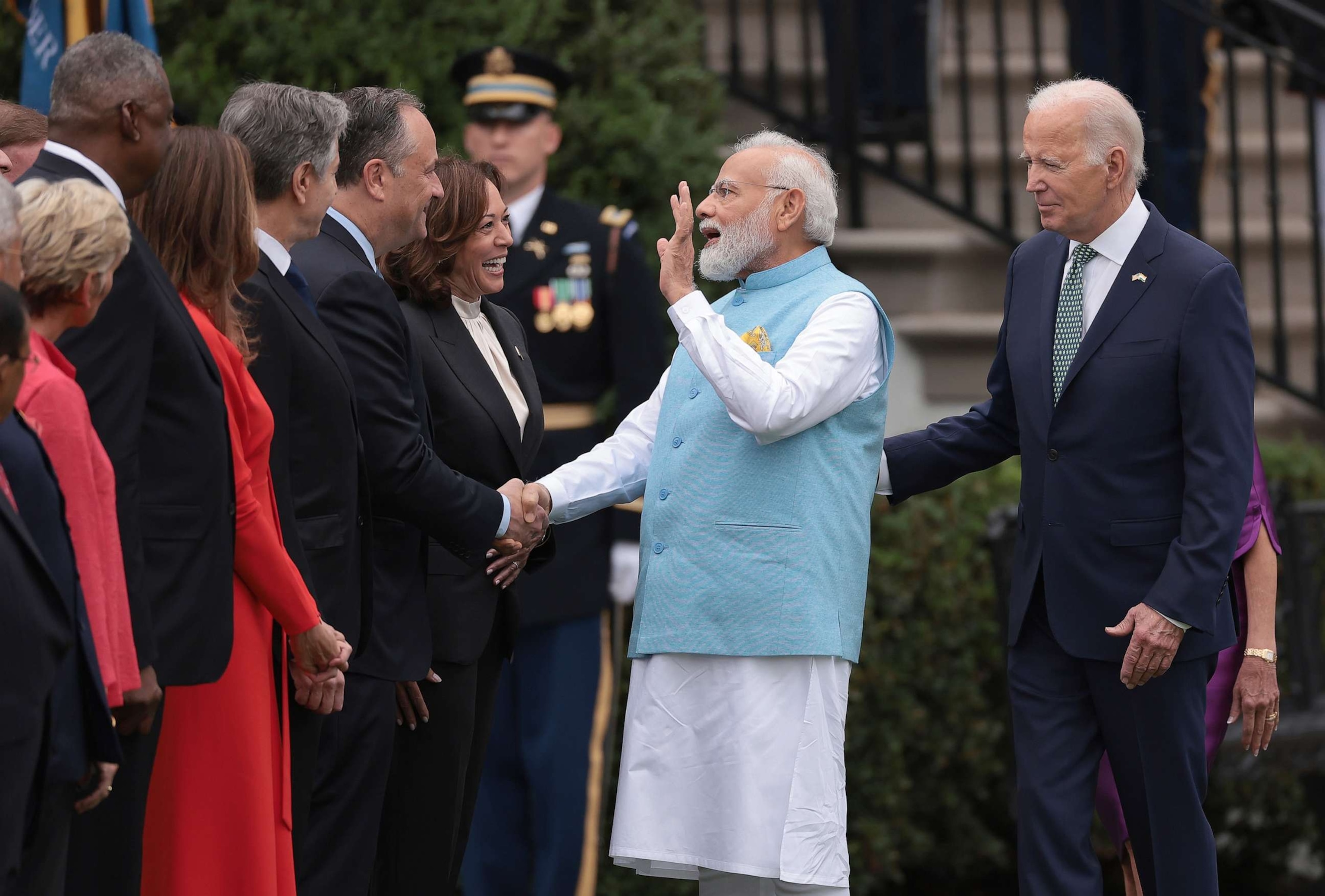
Biden and Modi met in the Oval Office and appeared side by side at a brief news conference in the East Room, a rarity for Modi who only held his first-ever press conference in India in 2019 after being in power for five years.

MORE: World population reaches 8 billion, India to overtake China to become most populated country
Modi also appeared on Capitol Hill to address a joint meeting of Congress before a state dinner at the White House Thursday night.
The prime minister received a standing ovation as he entered the chamber to chants of "Modi, Modi" from members, though a handful of progressive Democrats boycotted the speech, citing reports of human rights abuses.
Modi took a moment to note those in the chamber who have Indian roots, turning to point to Vice President Harris seated behind him whom he celebrated as having "made history."
"We come from different circumstances and history, but we are united by a common vision. And, by a common destiny," Modi told lawmakers in closing. "When our partnership progresses, economic resilience increases, innovation grows, science flourishes, knowledge advances, humanity benefits, our seas and skies are safer, democracy will shine brighter and the world will be a better place."

About 400 guests are expected to attend the dinner, the White House said, which will include a plant-based menu and a mixture of American and Indian decor. There will be performances from American violinist Joshua Bell and from Penn Masala, a South Asian a cappella group from the University of Pennsylvania.
Modi's trip to Washington, though, isn't without controversy as the prime minister's been criticized for a rise in violence against religious minorities as well as a crackdown on the press and dissenters.
Some democracy watchdogs have downgraded India's rating in recent years. The U.S.-based Freedom House rated India as "partly free" in its 2023 report, and the Sweden-based Varieties of Democracy called India an "electoral autocracy."
"He's got a mixed record," Richard Rossow, chair U.S.-India Policy Studies at the Center for Strategic and International Studies, said of Modi. "We do see at times he feels politically weak domestically, he's initiated steps that directly or indirectly seem to stoke the fears of religious intolerance by him and his party. And we've also seen crackdown on civil society to some extent."
Human rights advocates and at least 70 lawmakers called on Biden to directly address human rights violations during Modi's visit. Experts told ABC News any human rights or democratic issues will likely be taken up in private between the two leaders.

Biden was asked during the news conference about those who've criticized his administration as overlooking such human rights concerns in hosting Modi.
"Look, the prime minister and I had a good discussion about democratic values," Biden responded. That's the nature of our relationship, we're straightforward with each other and we respect each other."
"I believe that we believe in the dignity of every citizen and it is in America's and I believe in India's DNA that the whole world, the whole world has a stake in our success," the president continued. "Both of us, in maintaining our democracies, make us appealing partners and enables us to expand democratic institutions across, around the world."
Modi, meanwhile, sidestepped a question on recent allegations of human right abuses as he claimed in India "there's absolutely no discrimination, neither on basis of cast, creed, or age, or any kind of geographic location."
"I'm actually really surprised that people say so," the prime minister said as he defended his government. "Indeed, India is a democracy ... democracy is in our DNA. democracy is our spirit. democracy runs in our veins. We live democracy."
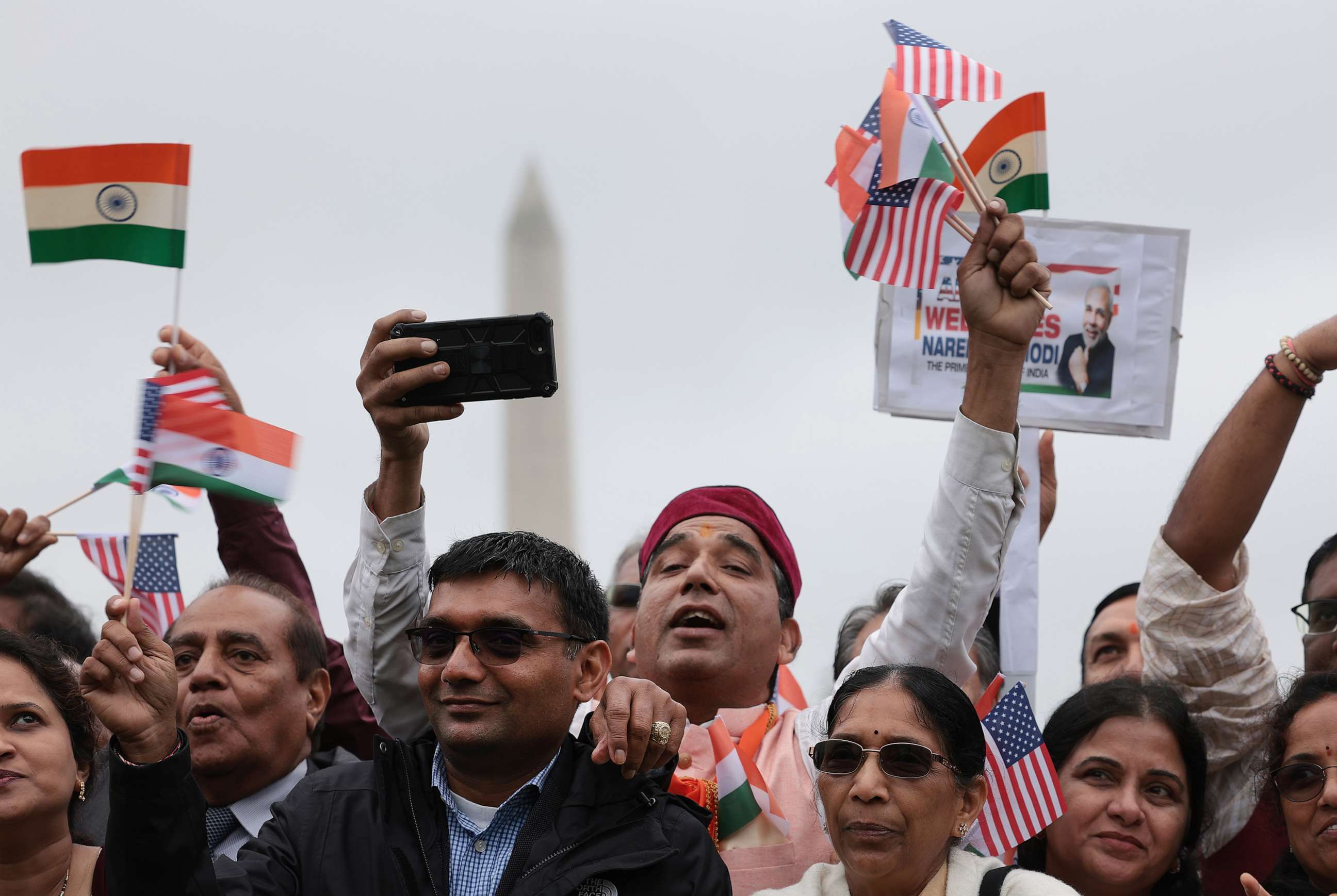
Also at issue during the trip was Russia. India, which has long relied on Russian oil and weapons, has avoided outrightly condemning the Russian invasion of Ukraine.
But experts noted Modi's slight change in tone when it comes to Russia's invasion, such as his recent statements on the importance of territorial integrity and sovereignty.
"Both Washington and New Delhi understand that they will not necessarily see eye to eye on Russia," Kenneth Juster, who served as the U.S. ambassador to India during the Trump administration, told ABC News. "But they can discuss that issue candidly with each other, and it is not going to have a negative impact on their broader strategic partnership."
A senior Biden official said the White House would "engage actively" with India on issues related to Russia and Ukraine, specifically India's efforts to diversify away from Russian military equipment.
MORE: 2,000 trauma operations in a year: Inside Ukraine's leading battlefield hospital
Talks between Biden and Modi also included trade, climate and space.
The two leaders announced a number of new commitments, including a joint space mission as well as various investments in technology, defense and clean energy.
Secretary of State Antony Blinken, speaking to the U.S.-India Business Council last week, touted trade between the two nations reached a record $191 billion. Blinken noted the U.S. is India's largest trading partner, and Indian companies invested more than $40 billion in the U.S. in IT, pharmaceuticals and more.
Though Juster said be believed there is still more work to do to advance on the trade front ahead of the state visit.
"For the world's largest economy, the United States, and its fifth largest economy, India, I believe that their bilateral trade relationship does not fulfill all of its potential. I am hoping that the two countries can continue to advance their trade and investment relationship both bilaterally and regionally, because economic issues are so important in the Indo-Pacific and China has a robust economic strategy for the region," he said.

Prior to landing in Washington, Modi met with Tesla CEO Elon Musk as well as other business leaders and health care experts.
He also marked International Day of Yoga by participating in a group session on the lawn of the United Nations headquarters.
The last time Modi visited the U.S. was in 2019, when he appeared alongside former President Donald Trump at a "Howdy Modi" rally in Texas attended by tens of thousands of people.
-ABC News' Ben Gittleson and Sarah Kolinovsky contributed to this report.
Related Topics
- President Biden
Top Stories

Trump hush money trial: Judge sets opening statements for Monday
- Apr 19, 5:15 PM

House Democrats help Johnson avoid foreign aid bills defeat, despite GOP defections
- Apr 19, 12:36 PM
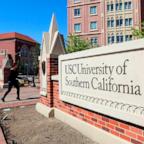
USC cancels all commencement speakers after canceled valedictorian speech
- Apr 19, 10:02 PM

Nothing to see here: US, Israel go radio silent on strike against Iran
- Apr 19, 2:32 PM

Emergency rooms refused to treat pregnant women, leaving one to miscarry in a lobby restroom
- Apr 19, 12:01 AM
ABC News Live
24/7 coverage of breaking news and live events
Watch CBS News
Biden hosts India's Modi for state visit, navigating critical relationship amid human rights concerns
Updated on: June 22, 2023 / 7:37 PM EDT / CBS/AP
Washington — President Biden emphasized the power of democracies on Thursday as he hosted Indian Prime Minister Narendra Modi at the White House, boasting of the collaborations between the two nations on "nearly every human endeavor" while stressing that universal human rights remain vital to the success of both the U.S. and India.
In a news conference Thursday, Mr. Biden called the relationship between the U.S. and India "among the most consequential in the world" and "stronger, closer and more dynamic than at any time in history." He underscored how two of the world's most powerful democracies were cooperating on issues such as the climate, health care and space, saying that the U.S-India economic relationship was "booming."
But standing alongside Modi, who has come under criticism from human rights advocates, Mr. Biden also emphasized the importance of press and religious freedoms. "The bottom line is simple," he said. "We want people everywhere to have the opportunity to live in dignity."
A question about his handling of human rights was the first Modi took from a journalist in a press conference since he became prime minister in 2014. A Wall Street Journal reporter asked Modi what steps he and his government are willing to take to improve the rights of Muslims and other minorities and to uphold free speech.
"When you talk of democracy, if there are no human values and there is no humanity, there are no human rights, then it's not a democracy," Modi said, through a translator. "And that is why when you say democracy and you accept democracy and when we live democracy, then there is absolutely no space for discrimination. ... That is why, in India's democratic values, there is absolutely no discrimination, either on basis of caste, creed, age or any kind of geographic location."
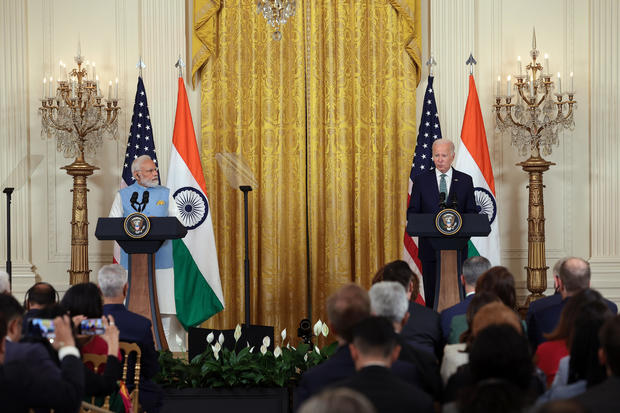
Mr. Biden and Modi devoted the state visit to launching new partnerships in defense, semiconductor manufacturing and more sectors as they look to strengthen their countries' crucial — albeit complicated — relationship.
Thousands gathered on the White House South Lawn for the welcoming ceremony, listening to performances by violinist Vibha Janakiraman and the a cappella group Penn Masala. As Modi arrived, the crowd — including many members of the Indian diaspora — broke out in a chant of "Modi, Modi, Modi."
"All eyes are on the two largest democracies in the world, India and America," Modi said as the leaders met in the Oval Office. "I believe that our strategic partnership is important. I'm confident that working together will be successful."
At the earlier welcoming ceremony, Mr. Biden said he believes the U.S.-India relationship "will be one of the defining relationships of the 21st century. Since I've become president, we've continued to build a relationship built on mutual trust, candor and respect."
But as Mr. Biden fetes Modi, human rights advocates and some U.S. lawmakers are questioning the Democratic president's decision to offer the high honor to a leader whose nine-year tenure over the world's biggest democracy has seen a backslide in political, religious and press freedoms.
Biden administration officials say honoring Modi, the leader of the conservative Hindu nationalist Bharatiya Janata Party, is Diplomacy 101. The U.S.-India relationship will be vital in coming decades as both sides navigate an ascendant China and the enormity of climate change, artificial intelligence, supply chain resilience and other issues.
Still, Mr. Biden said at the start of his Oval Office meeting with Modi that he wanted the partnership to be "grounded on democracy, human rights, freedom and the rule of law."
White House national security adviser Jake Sullivan said the president intended to raise his concerns but avoid lecturing the prime minister.
"The question of where politics and the question of democratic institutions go in India is going to be determined within India by Indians," Sullivan said. "It's not going to be determined by the United States." He said "our part is to speak out on behalf of universal values."
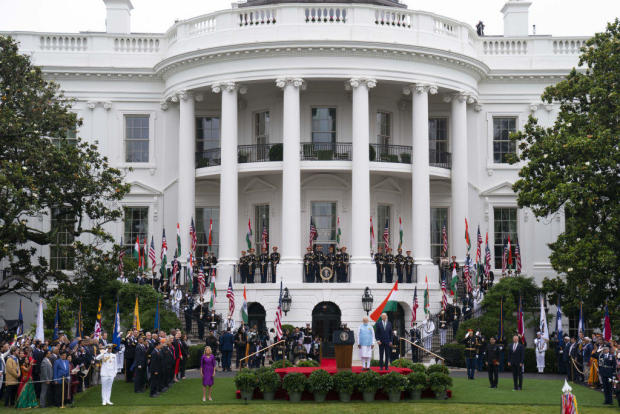
Among the announcements made Thursday was an agreement that will allow U.S.-based General Electric to partner with India-based Hindustan Aeronautics to produce jet engines for Indian aircraft in India and the sale of U.S.-made armed MQ-9B SeaGuardian drones.
The Biden administration also is coming out with plans to bolster India's semiconductor industry. U.S.-based Micron Technology has agreed to build a $2.75 billion semiconductor assembly and test facility in India, with Micron spending $800 million and India financing the rest. U.S.-based Applied Materials is announcing it will launch a new semiconductor center for commercialization and innovation in India, and Lam Research, another semiconductor manufacturing equipment company, will start a training program for 60,000 Indian engineers.
On the space front, India will sign on to the Artemis Accords, a blueprint for space exploration cooperation among nations participating in NASA's lunar exploration plans. NASA and the Indian Space Research Organization also agreed to make a joint mission to the International Space Station next year.
"We made critical and emerging technologies the pillar of our next generation partnership to ensure these technologies promote and protect our values, remain open, accessible, trusted and secure," Mr. Biden added. "All this matters for America, for India and for the world."
The State Department will also announce plans to open consulates in Bengaluru and Ahmedabad, while India will reopen its consulate in Seattle.
At the welcoming ceremony, Modi called the Indian diaspora in America — the millions of immigrants and their children from the subcontinent living in the U.S. — "the real strength" of the U.S.-India relationship. He said the honor of a formal state visit — the first in the U.S. for India since Barack Obama honored Modi's predecessor, Manmohan Singh, in 2009 — reflected the positive impact Indians are having worldwide.
Modi, the son of a tea seller who rose to be India's premier, also recalled that the first time he visited the White House was three decades ago as a "common man."
"I have come here many times but today for the first time, the doors of the White House have been opened for the Indian American community in such large numbers," Modi said to an estimated crowd of 7,000.
Modi has faced criticism over legislation amending the country's citizenship law that fast-tracks naturalization for some migrants but excludes Muslims, a rise in violence against Muslims and other religious minorities by Hindu nationalists, and the recent conviction of India's top opposition leader, Rahul Gandhi, for mocking Modi's surname.
In 2005, the U.S. revoked Modi's visa to the U.S., citing concerns that, as chief minister of Gujarat, he did not act to stop communal violence during 2002 anti-Muslim riots that left more than 1,000 people dead. An investigation approved by the Indian Supreme Court later absolved Modi, but the stain of the dark moment has lingered.
A group of more than 70 lawmakers wrote to Mr. Biden this week urging him to raise concerns about the erosion of religious, press and political freedoms during the visit.
"It is an important country to me, and we must call out some of the real issues that are threatening the viability of democracy in all of our countries," said Democratic Rep. Pramila Jayapal of Washington, who was born in India and helped organize the lawmakers' letter. "If India continues to backslide, I think it will affect our ability to have a really strong relationship with the country."
Mr. Biden and Modi have also had differences over Russia's war in Ukraine. India abstained from voting on U.N. resolutions condemning Russia and refused to join the global coalition against Russia. Since the start of the war, the Modi government has also dramatically increased its purchase of Russian oil.
White House officials note that there are signs of change in India's relationship with Russia, which has long been New Delhi's biggest defense supplier.
India is moving away from Russian military equipment, looking more to the U.S., Israel, Britain and other nations. Modi recently met with Ukrainian President Volodymyr Zelenskyy and has spoken out about his worries about the potential use of nuclear weapons by Russia.
State visits typically are reserved for America's closest allies, but they also have been used in the past as a carrot to try to strengthen relationships with countries with which the United States has had complicated relationships.
Modi's busy itinerary on Thursday also included an address to Congress and a lavish White House state dinner .
"There are millions here who have roots in India," Modi told the joint meeting of Congress Thursday afternoon. "Some of them sit proudly in this chamber. And there is one behind me," he added, nodding to Vice President Kamala Harris and prompting a standing ovation from Republicans and Democrats alike.
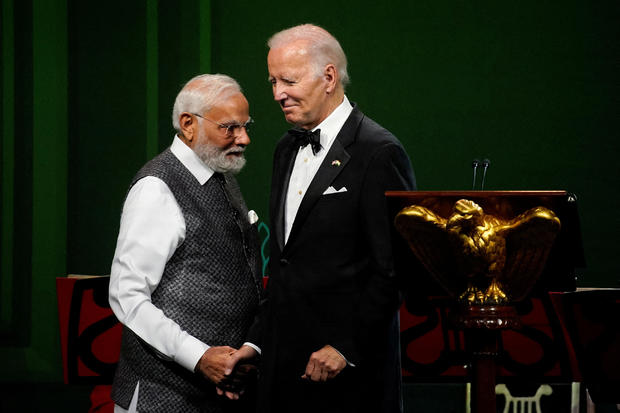
- Narendra Modi
- Civil Rights
More from CBS News
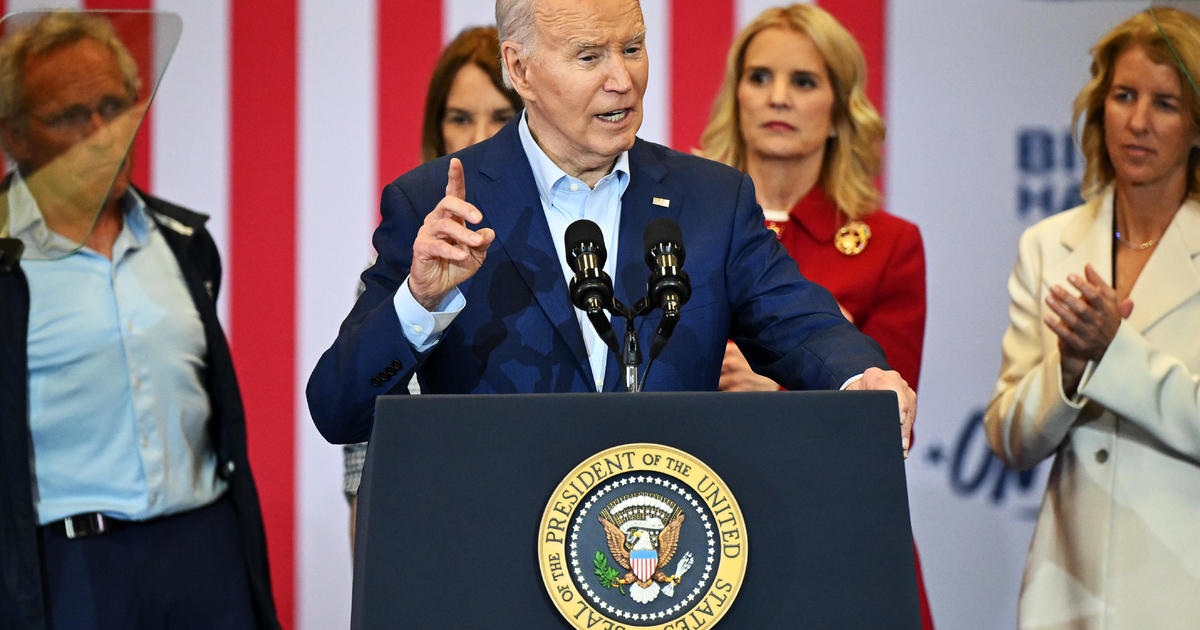
Several RFK Jr. siblings endorse Biden
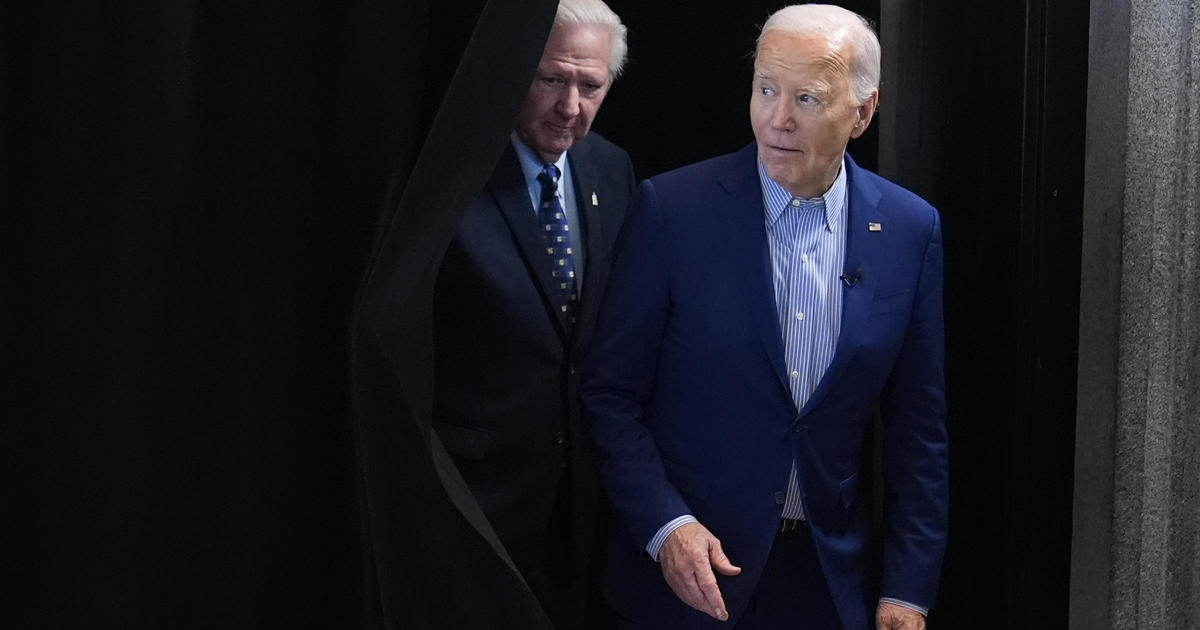
Biden to ask U.S. trade rep to consider tripling tariffs on Chinese steel

What's the mood in Iran as Israel mulls its response?
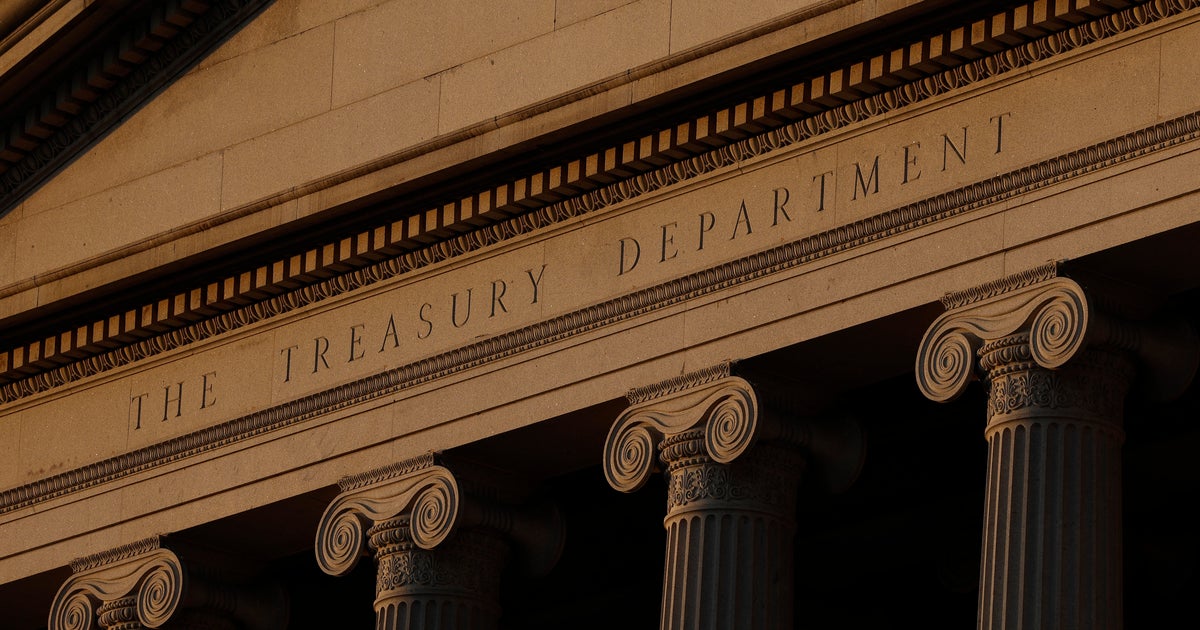
U.S. sanctions 2 entities over fundraising for extremist West Bank settlers
- Election 2024
- Entertainment
- Newsletters
- Photography
- Personal Finance
- AP Investigations
- AP Buyline Personal Finance
- AP Buyline Shopping
- Press Releases
- Israel-Hamas War
- Russia-Ukraine War
- Global elections
- Asia Pacific
- Latin America
- Middle East
- Election Results
- Delegate Tracker
- AP & Elections
- Auto Racing
- 2024 Paris Olympic Games
- Movie reviews
- Book reviews
- Personal finance
- Financial Markets
- Business Highlights
- Financial wellness
- Artificial Intelligence
- Social Media
Biden and Modi cheer booming economic ties in visit that also reckoned with India’s record on rights
President Joe Biden and first lady Jill Biden welcomed Indian Prime Minister Narendra Modi to the White House Wednesday evening. (June 21)
President Joe Biden speaks with India’s Prime Minister Narendra Modi during a State Arrival Ceremony on the South Lawn of the White House in Washington, Thursday, June 22, 2023. The Washington Monument is seen in the distance. (AP Photo/Andrew Harnik)
- Copy Link copied
Vice President Kamala Harris and House Speaker Kevin McCarthy of Calif., laugh as India’s Prime Minister Narendra Modi makes a joke as he addresses a joint meeting of Congress at the Capitol in Washington, Thursday, June 22, 2023. (AP Photo/Manuel Balce Ceneta)
India’s Prime Minister Narendra Modi embraces President Joe Biden during a State Arrival Ceremony on the South Lawn of the White House, Thursday, June 22, 2023, in Washington. (AP Photo/Evan Vucci)
President Joe Biden greets India’s Prime Minister Narendra Modi as he arrives for a State Arrival Ceremony on the South Lawn of the White House in Washington, Thursday, June 22, 2023. (AP Photo/Andrew Harnik)
First lady Jill Biden, India’s Prime Minister Narendra Modi and President Joe Biden wave from the Blue Room Balcony during an Arrival Ceremony on the South Lawn of the White House, Thursday, June 22, 2023, in Washington. (AP Photo/Manuel Balce Ceneta)
President Joe Biden listens as India’s Prime Minister Narendra Modi speaks during a State Arrival Ceremony on the South Lawn of the White House, Thursday, June 22, 2023, in Washington. (AP Photo/Manuel Balce Ceneta)
India’s Prime Minister Narendra Modi applauds as President Joe Biden speaks during a State Arrival Ceremony on the South Lawn of the White House Thursday, June 22, 2023, in Washington. (AP Photo/Manuel Balce Ceneta)
India’s Prime Minister Narendra Modi stands with President Joe Biden during a State Arrival Ceremony on the South Lawn of the White House Thursday, June 22, 2023, in Washington. (AP Photo/Manuel Balce Ceneta)
India’s Prime Minister Narendra Modi shakes hands with President Joe Biden during a State Arrival Ceremony on the South Lawn of the White House Thursday, June 22, 2023, in Washington. (AP Photo/Manuel Balce Ceneta)
India’s Prime Minister Narendra Modi stands with President Joe Biden as they watch the United States Army Old Guard Fife and Drum Corps during a State Arrival Ceremony on the South Lawn of the White House Thursday, June 22, 2023, in Washington. (AP Photo/Manuel Balce Ceneta)
White House workers roll out the red carpet, prior to the arrival of Indian Prime Minister Narendra Modi and a State Arrival Ceremony on the South Lawn of the White House in Washington, Thursday, June 22, 2023. (AP Photo/Andrew Harnik)
Guests arrive to view a State Arrival Ceremony for Indian Prime Minister Narendra Modi, on the South Lawn of the White House Thursday, June 22, 2023, in Washington. (AP Photo/Manuel Balce Ceneta)
India’s Prime Minister Narendra Modi shakes hands with Vice President Kamala Harris during a State Arrival Ceremony with President Joe Biden on the South Lawn of the White House Thursday, June 22, 2023, in Washington. (AP Photo/Manuel Balce Ceneta)
President Joe Biden and India’s Prime Minister Narendra Modi walk along the Colonnade to the Oval Office after a State Arrival Ceremony on the South Lawn of the White House, Thursday, June 22, 2023, in Washington. (Evelyn Hockstein/Pool Photo via AP)
President Joe Biden and Indian Prime Minister Narendra Modi walk off stage at the conclusion of a State Arrival Ceremony on the South Lawn of the White House, Thursday, June 22, 2023, in Washington. (AP Photo/Andrew Harnik)
President Joe Biden, first lady Jill Biden, and Indian Prime Minister Narendra Modi, walk into the White House at the conclusion of a State Arrival Ceremony on the South Lawn of the White House, Thursday, June 22, 2023, in Washington. (AP Photo/Andrew Harnik)
India’s Prime Minister Narendra Modi and President Joe Biden stand on stage during a State Arrival Ceremony on the South Lawn of the White House, Thursday, June 22, 2023, in Washington. (AP Photo/Evan Vucci)
India’s Prime Minister Narendra Modi speaks as President Joe Biden listens during a State Arrival Ceremony on the South Lawn of the White House, Thursday, June 22, 2023, in Washington. (AP Photo/Evan Vucci)
India’s Prime Minister Narendra Modi and President Joe Biden stand for the National Anthem during a State Arrival Ceremony on the South Lawn of the White House, Thursday, June 22, 2023, in Washington. (AP Photo/Evan Vucci)
India’s Prime Minister Narendra Modi listens as President Joe Biden speaks during a news conference in the East Room of the White House, Thursday, June 22, 2023, in Washington. (AP Photo/Evan Vucci)
India’s Prime Minister Narendra Modi listens as President Joe Biden speaks during a news conference in the East Room of the White House in Washington, Thursday, June 22, 2023. (AP Photo/Jacquelyn Martin)
President Joe Biden speaks during a news conference with India’s Prime Minister Narendra Modi in the East Room of the White House in Washington, Thursday, June 22, 2023. (AP Photo/Jacquelyn Martin)
India’s Prime Minister Narendra Modi addresses a joint meeting of Congress at the Capitol in Washington, Thursday, June 22, 2023. (AP Photo/Manuel Balce Ceneta)
Rep. Jim Jordan, R-Ohio, listens as India’s Prime Minister Narendra Modi addresses a joint meeting of Congress at the Capitol in Washington, Thursday, June 22, 2023. (AP Photo/Manuel Balce Ceneta)
India’s Prime Minister Narendra Modi addresses a joint meeting of Congress, at the Capitol in Washington, Thursday, June 22, 2023. (AP Photo/J. Scott Applewhite)
India’s Prime Minister Narendra Modi addresses a joint meeting of Congress at the Capitol in Washington, Thursday, June 22, 2023. Vice President Kamala Harris and House Speaker Kevin McCarthy of Calif., applaud. (AP Photo/Manuel Balce Ceneta)
President Joe Biden and first lady Jill Biden wait to greet India’s Prime Minister Narendra Modi on the North Portico of the White House ahead of a State Dinner, Thursday, June 22, 2023, in Washington. (AP Photo/Andrew Harnik)
Roger Hochschild and Stephanie Hochschild arrive for the State Dinner with President Joe Biden and India’s Prime Minister Narendra Modi at the White House, Thursday, June 22, 2023, in Washington. (AP Photo/Jacquelyn Martin)
Maju Varghese and Julie Varghese arrive for the State Dinner with President Joe Biden and India’s Prime Minister Narendra Modi at the White House, Thursday, June 22, 2023, in Washington. (AP Photo/Jacquelyn Martin)
WASHINGTON (AP) — President Joe Biden on Thursday pronounced the U.S.-India relationship never stronger and rolled out new business deals with Indian Prime Minister Narendra Modi as human rights activists and American lawmakers questioned the administration’s decision to honor the leader with a pomp-filled state visit.
In a joint news conference with Modi, Biden called the relationship between the U.S. and India among the most consequential in the world and “more dynamic than at any time in history.” He underscored how two of the world’s most powerful democracies were cooperating on issues such as the climate, health care and space, saying that the U.S-India economic relationship was “booming.”
But Modi bristled at a reporter’s question about his country’s commitment to democratic values as the country has seen an erosion of religious, political and press freedoms under his watch.
“Democracy is our spirit,” Modi, who rarely takes questions from journalists, said through an interpreter. “Democracy runs in our veins. We live democracy and our ancestors have actually put words to this concept.” He said India has “proved that democracies can deliver and when I say deliver, this is regardless of class, creed, religion, gender.”
Yet Modi has faced criticism over legislation amending the country’s citizenship law that fast-tracks naturalization for some migrants but excludes Muslims, a rise in violence against Muslims and other religious minorities by Hindu nationalists, and the recent conviction of India’s top opposition leader, Rahul Gandhi, for mocking Modi’s surname .
Nevertheless, later in a 59-minute address before a joint meeting of Congress, Modi insisted that in India “diversity is a natural way of life.”
“We are home to all faiths in the world, and we celebrate all of them,” added Modi, in a line that brought many cheering lawmakers to their feet.
The premier’s description runs counter to accusations by rights groups of widespread attacks and discrimination against India’s Muslims and other minorities under Modi.
A group of more than 70 lawmakers wrote to Biden this week urging him to raise concerns about the erosion of religious, press and political freedoms during the visit. At least six Democratic lawmakers —Democratic Reps. Cori Bush of Missouri, Rashida Tlaib of Michigan, Ilhan Omar of Minnesota, Greg Casar of Texas, Jamaal Bowman and Alexandria Ocasio-Cortez of New York — boycotted Modi’s address to Congress, because of concerns about his human rights records.
“When it comes to standing up for human rights, actions speak louder than words,” Bush, Tlaib, Omar and Bowman said in a joint statement. “By bestowing Prime Minister Modi with the rare honor of a joint address, Congress undermines its ability to be a credible advocate for the rights of religious minorities and journalists around the world.”
Standing alongside Modi, Biden emphasized that press, religious and other fundamental freedoms should be at the core of how both democracies operate. During their Oval Office meeting, Biden said, he and Modi had a “good discussion about democratic values” while Modi said “there’s absolutely no space for discrimination” when pressed about his own commitment on human rights.
The state visit, just the third of the Biden’s presidency, was certainly a glitzy affair.
Thousands gathered on the White House South Lawn for the welcoming ceremony, listening to performances by violinist Vibha Janakiraman and the a cappella group Penn Masala. As Modi arrived, the crowd — including many members of the Indian diaspora — broke out in a chant of “Modi, Modi, Modi.”
“All eyes are on the two largest democracies in the world, India and America,” Modi said. “I believe that our strategic partnership is important. I’m confident that working together will be successful.”
Later, Modi told Congress that “our partnership augurs well for the future of democracy” as the two countries expand partnerships in defense, semiconductor manufacturing and other industries. He also cheered the “samosa caucus”—the five U.S. House members of Indian descent—and Vice President Kamala Harris, who is Black and of Indian descent, as examples of the impact of the diaspora.
Biden administration officials say honoring Modi, the leader of the conservative Hindu nationalist Bharatiya Janata Party, is Diplomacy 101. The U.S.-India relationship will be vital in coming decades as both sides navigate an ascendant China and the enormity of climate change , artificial intelligence, supply chain resilience and other issues.
“On the issues that matter most that will define the future, our nations look to one another including on critical regional and global issues,” Biden said.
Among the announcements made Thursday is an agreement that will allow U.S.-based General Electric to partner with India-based Hindustan Aeronautics to produce jet engines for Indian aircraft in India and the sale of U.S.-made armed MQ-9B SeaGuardian drones.
The Biden administration also announced plans to bolster India’s semiconductor industry. U.S.-based Micron Technology has agreed to build a $2.75 billion semiconductor assembly and test facility in India, with Micron spending more than $800 million and India financing the rest. U.S.-based Applied Materials will launch a new semiconductor center for commercialization and innovation in India, and Lam Research, another semiconductor manufacturing equipment company, will start a training program for 60,000 Indian engineers.
On the space front, India signed on to the Artemis Accords, a blueprint for space exploration cooperation among nations participating in NASA’s lunar exploration plans. NASA and the Indian Space Research Organization also agreed to make a joint mission to the International Space Station next year.
“We made critical and emerging technologies the pillar of our next generation partnership to ensure these technologies promote and protect our values, remain open, accessible, trusted and secure,” Biden added. “All this matters for America, for India and for the world.”
At the welcoming ceremony, Modi called the Indian diaspora in America — the millions of immigrants and their children from the subcontinent living in the U.S. — “the real strength” of the U.S.-India relationship. He said the honor of a formal state visit — the first in the U.S. for India since Barack Obama honored Modi’s predecessor, Manmohan Singh, in 2009 — reflected the positive impact Indians are having worldwide.
Modi, the son of a tea seller who rose to be India’s premier, also recalled that the first time he visited the White House was three decades ago as a “common man.”
“I have come here many times but today for the first time, the doors of the White House have been opened for the Indian American community in such large numbers,” Modi said to an estimated crowd of 7,000.
Despite the major deals, the visit was shadowed by concerns laid out by rights activists and lawmakers who question Modi’s commitment to democratic principles.
In 2005, the U.S. revoked Modi’s visa to the U.S., citing concerns that, as chief minister of the state of Gujarat, he did not act to stop communal violence during 2002 anti-Muslim riots that left more than 1,000 people dead . An investigation approved by the Indian Supreme Court later absolved Modi, but the stain of the dark moment has lingered.
Biden and Modi have also had differences over Russia’s war in Ukraine. India abstained from voting on U.N. resolutions condemning Russia and refused to join the global coalition against Russia. Since the start of the war, the Modi government has also dramatically increased its purchase of Russian oil.
White House officials note that there are signs of change in India’s relationship with Russia, which has long been New Delhi’s biggest defense supplier.
India is moving away from Russian military equipment, looking more to the U.S., Israel, Britain and other nations. Modi recently met with Ukrainian President Volodymyr Zelenskyy and has spoken out about his worries about the potential use of nuclear weapons by Russia.
Modi, before Congress, said the war is “causing great pain” in Ukraine and having residual effects on Europe and beyond.
“This is not an era of war, but it is one of dialogue and diplomacy” Modi said. “And we must all do what we can to stop the bloodshed and human suffering.”
Without specifically naming China, Modi also addressed heightened tensions in the region, saying “dark clouds of coercion and confrontation are casting their shadow in the Indo Pacific.”
Later Thursday, Modi attended a lavish White House state dinner in his honor.
Associated Press writers Lisa Mascaro, Fatima Hussein, Stephen Groves, and Ellen Knickmeyer contributed to this report.

Photography
In photos: President Biden hosts Indian Prime Minister Modi during state visit
By Washington Post Staff | Jun 22, 2023
Prime Minister Narendra Modi of India is visiting President Biden at the White House for a state visit featuring both fanfare and substance, highlighting the growing importance of the U.S.-India relationship at a time of geopolitical turmoil.
Tom Brenner for The Washington Post
Biden and Modi walk toward the Oval Office.
Bill O'Leary/The Washington Post
Biden and Modi during their meeting in the Oval Office.
White House aides say the packed schedule — including a long list of expected agreements on issues including technology, trade and defense — reflects India’s increasingly prominent role in global affairs and Washington’s desire to boost ties with the world’s most populous nation, in part as a bulwark against China.
Biden, Modi and Jill Biden wave from the White House balcony.
Modi, who is just the third world leader Biden has hosted for a state visit, is seeking to bolster his country’s global standing, which White House officials say could in turn benefit U.S. interests.
Modi and Biden approach Vice President Harris during the official state visit on the South Lawn of the White House.
A girl plays with U.S. and Indian flags on the South Lawn during the state visit ceremony.
The trip marks the third official state visit for any foreign leader during Biden’s presidency, following similar events for French President Emmanuel Macron and South Korean President Yoon Suk Yeol. Modi, who addressed U.S. lawmakers in 2016, is one of only a handful of world leaders who have been invited twice to address a joint meeting of Congress.
Biden and Modi embrace during the ceremony.
During a raucous arrival ceremony Thursday morning with thousands of chanting supporters, Biden hailed Modi and touted the “limitless possibilities” of the U.S.-India relationship. “Two great nations, two great friends, two great powers that can define the course of the 21st century,” Biden said.
Modi and Biden enter the East Room of the White House for a joint news conference.
The White House press corps listen to a translation during the news conference.
Biden speaks during the news conference as Modi looks on. Despite the pomp and pageantry, the visit is not without controversy. Human rights groups, lawmakers and scholars have written open letters to the White House and published opinion pieces in top U.S. media outlets calling out the erosion of democratic principles in India on Modi’s watch.
Modi speaks during the East Room news conference. The prime minister’s visit comes at a notable time for Indian Americans. Besides Harris, the vice president, two Republican presidential candidates are also of Indian descent: former South Carolina governor Nikki Haley and biotech entrepreneur Vivek Ramaswamy.
Harris arrives for Modi's address before a joint meeting of Congress.
Ricky Carioti/The Washington Post
Rep. Shri Thanedar (D-Mich.) arrives for the address. (Ricky Carioti/The Washington Post)
Rep. Ami Bera (D-Calif.), left, talks to House Minority Leader Hakeem Jeffries (D-N.Y.). (Ricky Carioti/The Washington Post)
Rep. Raja Krishnamoorthi (D-Ill.) gives a thumbs-up before the address. (Ricky Carioti/The Washington Post)
Sen. Joe Manchin III (D-W.Va.) and Rep. Nancy Pelosi (D-Calif.) chat. (Ricky Carioti/The Washington Post)
Bera has a conversation with Reps. Pramila Jayapal (D-Wash.) and Gregory W. Meeks (D-N.Y.) before the address. (Ricky Carioti/The Washington Post)
Modi greets lawmakers before delivering his remarks.
Modi shakes hands with a lawmaker.
Modi receives a standing ovation during a joint meeting of Congress.
Minh Connors/The Washington Post
Modi speaks to Congress.
A view of the House chamber.
Audience members cheer during Modi's speech.
Modi addresses Congress.
Modi waves to supporters after his speech.
Modi takes photos with members of Congress.
Biden and the first lady greet Modi as he arrives at the White House for the state dinner.
Sundar Pichai, chief executive of Google parent Alphabet, and his wife, Anjali Pichai, arrive for the state dinner.
Ting Shen/Pool/EPA-EFE/Shutterstock
Billie Jean King, left, and her wife, Ilana Kloss, arrive at the White House.
Tasos Katopodis/Getty Images
Martin Luther King III and Arndrea Waters King.
Jacquelyn Martin/AP
Huma Abedin, right, former longtime assistant and aide to former secretary of state Hillary Clinton, arrives with her sister, Heba Abedin.
Julia Nikhinson/Reuters
House Speaker Kevin McCarthy (R-Calif.) and Emily Norris McCarthy. (Tasos Katopodis/Getty Images)
Fashion designer Ralph Lauren and his wife, Ricky Lauren.
Pelosi and her husband, Paul Pelosi.
The Bidens and Modi walk down the Grand Staircase at the White House.
Biden listens to an interpreter as he offers a toast during the state dinner for Modi.
Susan Walsh/AP
Biden and Modi toast during the state dinner.
Biden welcomes Modi to the White House ahead of the state dinner.
Yuri Gripas/Pool/EPA-EFE/Shutterstock
The president and the first lady chat with Modi outside the White House.
Jabin Botsford/The Washington Post
The first lady shakes hands with Modi.
Anna Moneymaker/Getty Images
Denied a U.S. visa in 2005 over deadly religious riots in his home state, Modi came to Washington for a state visit that will highlight his change in fortune and growing global clout, even as concerns about human rights and democratic erosion in India are intensifying across the nation he now leads.
Evan Vucci/AP
For Biden, the visit underscores both the promise of strengthening ties with the world’s most populous nation and the peril of positioning his presidency as a pivotal force in the global battle between autocracy and democracy.
With Modi leading the world’s largest democracy while overseeing trends that human rights groups say undermine democratic principles, Biden’s decision to host a state visit risks undermining one of his key campaign messages against Donald Trump in 2020.
India is emerging as an increasingly vital player in a region the United States has prioritized in its foreign policy — a potential bulwark against China and an increasingly powerful actor in sectors including technology, defense and the arts.
The pomp and pageantry of a state visit will allow Biden and Modi to mark a moment of recognition for the Indian diaspora on the global stage, with hundreds of business leaders, policymakers, celebrities and scholars set to gather at the White House.
Praise for the relationship — and for Modi himself — has only seemed to intensify since Biden took office.
More from The Post
Modi’s White House visit tests Biden’s democracy-vs.-autocracy pitch
The latest from The Washington Post
Photo editing and production by Stephen Cook
Indian Prime Minister Modi’s Visit to Washington Is His Most Important So Far. Here’s What to Know
O n Thursday, U.S. President Joe Biden will meet India’s Prime Minister Narendra Modi on an official state visit in Washington D.C, which includes a South Lawn welcome, a state dinner, and an address to a joint session of Congress—an honor rarely granted to a visiting foreign leader. Modi will become just the third world leader, after France’s Emmanuel Macron and South Korea’s Yoon Suk Yeol, to receive this kind of diplomatic reception from President Biden.
While Modi has visited the U.S. many times—most recently for a three-day visit in September 2021, where he held a bilateral meeting with Biden—this will be the first time the Prime Minister’s trip will be categorized as the highest ranked visit according to diplomatic protocol. (The last state visit to the U.S. by an Indian leader was by former Prime Minister Manmohan Singh in November 2009.)
As India takes center stage as the world’s most populous country , one of the fastest growing economies, and a powerhouse for tech and innovation, the Biden Administration hopes it can court the country as a crucial ally to counter China’s growing influence in the Indo-Pacific region.
Read More: How India’s Record-Breaking Population Will Shape the World
More from TIME
“The visit will strengthen our two countries’ shared commitment to a free, open, prosperous and secure Indo-Pacific and our shared resolve to elevate our strategic technology partnership, including in defense, clean energy, and space,” the White House Press Secretary Karine Jean-Pierre said in a statement .
Below, what to know about the upcoming visit.
What are the top priorities for Modi’s state visit?
The state visit will include conversations aimed at further cementing an already-growing defense and manufacturing relationship between the U.S. and India. More recently, Washington and New Delhi have been engaged in discussions about jointly producing jet engines, long-range artillery, and military vehicles. In May, India joined Biden’s 14-member Indo-Pacific Economic Framework, which primarily aims to reduce China’s economic dominance through manufacturing, but without drawing up a formal trade agreement. Now, American company General Electric is hoping to co-produce military jets in the country, while the U.S. has increased investment in a semiconductor and chip manufacturing ecosystem set in India as a way to decrease dependence on Chinese manufacturing.
“The United States has really oriented a lot of its domestic and foreign policy around this question of, ‘how do we counter the Chinese challenge?’” says Milan Vaishnav, director of the South Asia Program at Carnegie. “So if you think about semiconductors and chip manufacturing, India is a big player right now.”
In the weeks leading up to Modi’s visit, both the U.S. Secretary of Defense Lloyd Austin and National Security Advisor Jake Sullivan have also made trips to New Delhi in an attempt to cut through the red tape to secure deals.
Read More: What Modi’s Visit to Washington Tells Us About Indian American Voters
This week, Reuters reported that India was inching closer to buying more than two dozen U.S.-made armed drones worth $2 to $3 billion to help enhance border surveillance and improve counterterrorism intelligence operations. The development comes after Sullivan, along with India’s National Security Advisor Ajit Doval, unveiled an ambitious roadmap for Indo-U.S. collaboration in specific high-technology areas, including semiconductors, next-generation telecommunication, artificial intelligence and defense.
For India, striking deals with the U.S. will in turn strengthen the country’s hard power capabilities and make it a hotbed for innovation. “They are hoping to get more U.S. dollars, more U.S. companies, and more U.S. entrepreneurs to make India a central part of their growth and expansion plans,” says Vaishnav.
Why do the U.S. and India want to counter China?
Experts say both countries see their strategic interests converge in countering China’s threat as it becomes more expansionist and ambitious on the global stage. For the U.S., China has increasingly become its biggest competitor in the spheres of influence, while India has been embroiled in territorial disputes in the Himalayas ever since it fought a brief war with China in 1962.
In 2020, tensions between India and China flared when Beijing became more assertive over land claims along the shared Himalayan border and an altercation between Indian and Chinese military forces in the northern Indian region of Ladakh reportedly left 20 Indian and four Chinese soldiers dead. China’s close ties to Pakistan has also resulted in the China-Pakistan Economic Corridor as part of the Belt and Road Initiative and controversially passes through a section of Kashmir controlled by Islamabad, adding to India’s concerns.
By helping India build up its economic and defense capabilities, Washington hopes to coordinate with New Delhi to tackle global challenges as part of its long-term interests, says Vaishnav. “Washington is really looking to create a framework of deterrence to essentially deter Chinese expansionism, and they view India as a linchpin in this strategy,” he says.
How has the relationship between India and the U.S. changed?
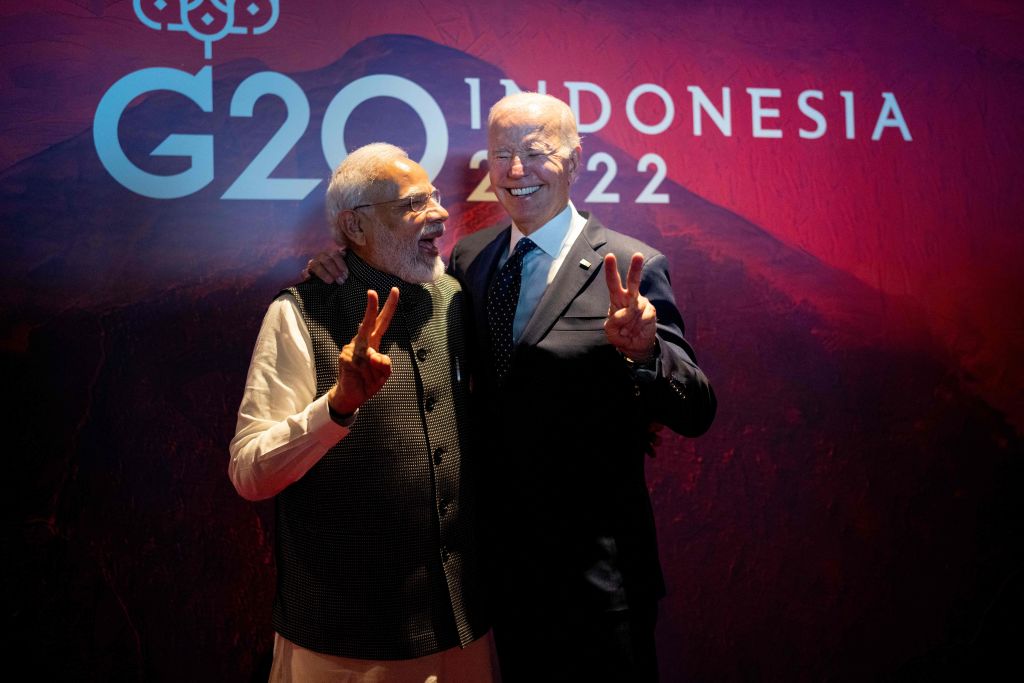
Relations between India and the U.S. have changed in notable ways over the years. After independence from British rule in 1947, India was more closely aligned with Russia during the Cold War era due to U.S. distrust and estrangement over India’s nuclear program, while the U.S. had a stronger partnership with India’s rival, Pakistan.
The two countries remained “estranged democracies,” according to the former U.S. Ambassador, Dennis Kux, until the early 1990s. However, since the early 2000s, U.S. administrations from Bill Clinton to Donald Trump have worked to build a strong relationship with India, recognizing its potential to be a strategic partner in ensuring the security of the Indo-Pacific region.
In 2005, India and the U.S. signed a major nuclear deal under which India was recognized de facto as a nuclear weapons power. More recently, India’s participation in the Quad, a security alliance between the U.S. and its allies, Australia, Japan and India, has led to the country becoming a critical element of American defense strategy.
Last year, the two countries conducted joint military exercises not far from the disputed Indo-China border, and in May, joined Biden’s 14-member Indo-Pacific Economic Framework, which officials and business executives hope will reduce American reliance on Chinese manufacturing for mutual benefit, including increased iPhone shipments from Indian-based factories.
More Must-Reads From TIME
- The 100 Most Influential People of 2024
- The Revolution of Yulia Navalnaya
- 6 Compliments That Land Every Time
- What's the Deal With the Bitcoin Halving?
- If You're Dating Right Now , You're Brave: Column
- The AI That Could Heal a Divided Internet
- Fallout Is a Brilliant Model for the Future of Video Game Adaptations
- Want Weekly Recs on What to Watch, Read, and More? Sign Up for Worth Your Time
Write to Astha Rajvanshi at [email protected]
What’s behind Indian Prime Minister Narendra Modi’s US visit?
The US is seeking stronger ties with India, which it sees as a vital ally in efforts to contain China’s rise.
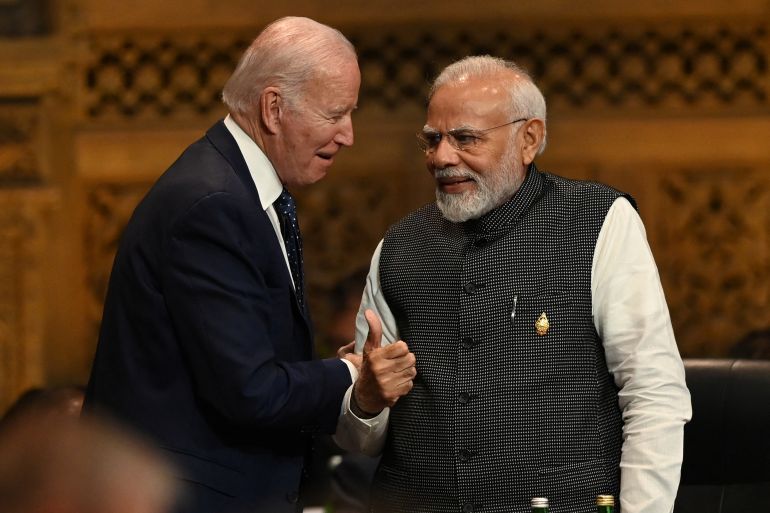
The administration of United States President Joe Biden is scheduled to host Indian Prime Minister Narendra Modi during an official visit later this week, as the two countries strengthen their ties amid shared antipathy towards China’s growing influence.
The White House will hold a state dinner in Modi’s honour on June 22, a sign of the burgeoning relationship between the two powers who have stepped up cooperation in areas such as trade and arms sales.
Keep reading
India, us agree on roadmap for defence industry cooperation, india’s pm narendra modi to address us congress, bbc gets india court summons in defamation case over modi film.
In a press release, the Biden administration said that a recent trip to New Delhi by National Security Advisor Jake Sullivan “underscored the dynamism of the US-India partnership in advance of Prime Minister Modi’s historic official state visit next week to the United States”.
But human rights groups say the celebratory dinner is a de facto endorsement of India’s far-right turn under Modi’s leadership — and undermines the Biden administration’s stated goal of emphasising human rights and democracy in its foreign policy.
During Modi’s tenure, India’s Muslims and other minorities have experienced an uptick in violence and repression as the government leans into a form of Hindu nationalism known as Hindutva . Modi has also been criticised for seeking to consolidate power and crack down on dissent.
“A state dinner is a special occasion; it’s not something that just any foreign leader receives,” Edward Mitchell, the deputy executive director of the Council on American-Islamic Relations (CAIR), told Al Jazeera over a phone call.
“How can the White House honour a leader who is an open anti-Muslim bigot, a right-wing ideologue who censors journalists and turns a blind eye to lynchings? You can work with India and Modi without taking this extra step to celebrate him.”
Confronting China
While advocacy groups have called for greater scrutiny of India’s human rights record , foreign policy experts say the Biden administration is primarily interested in the country as a potential counterweight to China, which the US sees as its most formidable global competitor.
Sarang Shidore, Director of Studies and Senior Research Fellow at the Quincy Institute, a US-based think tank, told Al Jazeera that he believes the US-India relationship will continue to grow as long as their shared concern over China remains in place.
“The United States does not conduct its foreign policy based on democracy and human rights. It conducts its foreign policy based on its interests, as all states do,” Shidore said.
China’s growing military power and assertive territorial claims have become a source of concern for nearby Asian countries such as the Philippines, Vietnam, Japan and India. The US has worked to fashion alliances with many of those countries in an attempt to contain China’s expanding influence.
“No question, there is increased Chinese nationalism,” said Shidore. “And China sees India as an increasing challenge due to its relationship with the US.”
Expanding ties
That was not always the case. During the Cold War, India’s relations with the US were often frosty. The country had cultivated close ties with the USSR and helped spearhead the Non-Aligned Movement, an organisation of countries that rejected pressures to join either pro-US or pro-Soviet blocs.
For its part, the US was a key ally of Pakistan. And by the early 1970s, the administration of US President Richard Nixon started to build a cooperative relationship with China, as an attempt, in part, to place pressure on the USSR.
But as the Cold War ended and China’s economic rise became a preoccupation of US foreign policy, India — with its size and economic heft — started to be seen as a key regional ally.
Despite its improved ties with the US, however, India has continued to resist what it sees as a false choice between the US and countries like President Vladimir Putin’s Russia.
But as Russia wages war in Ukraine and Washington seeks to isolate Moscow economically and diplomatically, that balancing act has become more difficult for India to maintain.
While India has increased its purchase of weapons from countries such as France and the US and recently agreed on a roadmap to increase cooperation with the US defence industry, it remains the world’s largest importer of Russian arms.
India has also joined China in buying up Russian oil at discounted prices, while the US and the European Union angle to limit Russia’s power in the global energy market.
But Shidore said that India’s status as a central player in Washington’s Asia strategy gives it significant leverage . Its ties to Russia are not likely to get in the way of its relationship with the US, he explained.
“India has played this quite well, playing Russia and the US off each other, and has benefitted in the process,” he said. “A country like India, which has such a strong convergence with the US on China, can create major spaces where it will differ very strongly from the US and can ride that out.”
Consolidating control
While US relations with allies such as Saudi Arabia and Israel have come under political scrutiny in recent years, Modi’s trip to the US has been welcomed with bipartisan support. An a joint letter inviting Modi to address Congress during his visit, members of the US House of Representatives and Senate have hailed the visit as a sign of the “enduring friendship” between the two countries.
“During your address, you will have the opportunity to share your vision for India’s future and speak to the global challenges our countries both face,” the letter reads.
However, Modi’s human rights record has not gone entirely unremarked. On Tuesday, a group of more than 70 lawmakers from the US House and Senate penned a letter to the Biden urging him to discuss concerns about religious freedom and journalistic expression in his talks with Modi.
The Muslim rights group CAIR, meanwhile, has issued a statement calling on the White House to drop its plans for a state dinner.
Modi’s high-profile reception in the US is a far cry from what he experienced before he was first elected prime minister in 2014. Prior to becoming India’s leader, Modi had been banned from entering the US due to allegations that he turned a blind eye to anti-Muslim violence in the western Indian state of Gujarat in 2002, when he was the province’s chief minister.
The deadly 2002 riots were the subject of a BBC documentary that Modi tried to ban in January, invoking his emergency powers as prime minister. The rights groups Amnesty International and Human Rights Watch screened the documentary in Washington on Tuesday.
Human rights groups say the move to ban the film was representative of a larger effort under Modi to stifle dissent and exercise control over independent institutions. They also accuse his government of pursuing an agenda influenced by far-right Hindu nationalism.
In an annual report on religious freedom in May, the US State Department expressed concern about the situation in India, noting that there were “open calls for genocide against Muslims”, lynchings and “attacks on places of worship”.
In May, for the fourth year in a row, the US Commission on International Religious Freedom called on the State Department to designate India as a “country of particular concern”.
In some states controlled by Modi’s Bharatiya Janata Party (BJP), politicians who lean into violent anti-Muslim rhetoric face little reprimand. Some Hindu nationalist paramilitaries have also waged a campaign against interfaith marriages , which they portray as an effort to dilute the Hindu population and win converts to Islam through “love jihad”.
Shidore, however, said that Modi’s human rights record has been quickly “papered over” and is unlikely to prevent cooperation with the US, so long as China remains a serious global competitor.
“The United States”, he said, “has set human rights issues aside in order to strengthen ties”.
Subscribe Now! Get features like

- Latest News
- Entertainment
- Real Estate
- UP Board Result Live
- UP 10th Result LIVE
- UP 12th Result LIVE
- Assam HSLC Result LIVE
- UP Board Result
- Election Schedule 2024
- Win iPhone 15
- IPL 2024 Schedule
- IPL Points Table
- IPL Purple Cap
- IPL Orange Cap
- AP Board Results 2024
- The Interview
- Web Stories
- Virat Kohli
- Mumbai News
- Bengaluru News
- Daily Digest

PM Modi's historic US trip: All you need to know about ‘state visit’
The june 20-24 visit will be modi's sixth to the united states as india's pm, but his first official state visit to the country..
Prime Minister Narendra Modi on Tuesday left for his historic state visit to the United States. This will be his sixth US visit since coming to power in May 2014, but his first official state visit to the country. The trip will commence on June 20 and conclude on June 24, after which the prime minister will leave for another maiden state visit, to Egypt.

Also Read | Modi leaves for historic US visit: ‘Together we stand stronger’
What is a state visit.
It is a formal visit by a head of state to a foreign country, at the invitation of the head of state of that foreign country. When a leader undertakes a state visit, the head of state of the destination country acts as the former's official host throughout the duration of the trip.
Such a visit always includes a state reception by the host for the guest. US President Joe Biden and First Lady Jill Biden, too, will host PM Modi for a state dinner.
Also, a state visit is usually reserved only for ‘closest friends and allies.’ It, therefore, signifies the highest expression of friendly bilateral ties between two sovereign nations.
How is a state visit different from an official visit?
The latter involves much less pomp and show than the former. An official visit, also sometimes known as official working visit or working visit, may include an official dinner, which, however, is nowhere near as glittering as a state dinner.
Also, a state visit is usually undertaken by a head of state, and not the head of government. Modi's trip, therefore, is significant as the President is the head of state in India, and the prime minister, the head of government. The US President is both the head of state and government.
Indian leaders and state visits to the US
Before Modi, only 2 Indian leaders have been hosted by the United States as an official state guest: President S Radhakrishnan in June 1963, and PM Manmohan Singh in November 2009.
Also Read | Modi in USA: 5 things to know about PM's upcoming state visit
Overall, as many as 9 Indian PMs have undertaken visits to the US: Jawaharlal Nehru and Atal Bihari Vajpayee (4 trips each), Indira Gandhi and Rajiv Gandhi (3 each), PV Narasimha Rao (2), and Morarji Desai and IK Gujral (1 each). Singh, on the other hand, went there 8 times as India's premier.

Follow the latest breaking news and developments from India and around the world with Hindustan Times' newsdesk. From politics and policies to the economy and the environment, from local issues to national events and global affairs, we've got you covered. ...view detail
- State Visit
- Narendra Modi
Join Hindustan Times
Create free account and unlock exciting features like.

- Terms of use
- Privacy policy
- Weather Today
- HT Newsletters
- Subscription
- Print Ad Rates
- Code of Ethics
- Elections 2024
- LSG vs CSK IPL Live Score
- India vs England
- T20 World Cup 2024 Schedule
- IPL 2024 Auctions
- T20 World Cup 2024
- Cricket Teams
- Cricket Players
- ICC Rankings
- Cricket Schedule
- Other Cities
- Income Tax Calculator
- Budget 2024
- Petrol Prices
- Diesel Prices
- Silver Rate
- Relationships
- Art and Culture
- Taylor Swift: A Primer
- Telugu Cinema
- Tamil Cinema
- Exam Results
- Competitive Exams
- Board Exams
- BBA Colleges
- Engineering Colleges
- Medical Colleges
- BCA Colleges
- Medical Exams
- Engineering Exams
- Horoscope 2024
- Festive Calendar 2024
- Compatibility Calculator
- The Economist Articles
- Explainer Video
- On The Record
- Vikram Chandra Daily Wrap
- PBKS vs DC Live Score
- KKR vs SRH Live Score
- EPL 2023-24
- ISL 2023-24
- Asian Games 2023
- Public Health
- Economic Policy
- International Affairs
- Climate Change
- Gender Equality
- future tech
- Daily Sudoku
- Daily Crossword
- Daily Word Jumble
- HT Friday Finance
- Explore Hindustan Times
- Privacy Policy
- Terms of Use
- Subscription - Terms of Use
- Skip to main content
- Keyboard shortcuts for audio player
Indian Prime Minister Modi to visit the U.S.

Ayesha Rascoe
NPR's Ayesha Rascoe speaks to Seema Sirohi – a columnist for The Economic Times – about Indian Prime Minister Narendra Modi's state visit to the US this week.
AYESHA RASCOE, HOST:
The White House will roll out the red carpet this week for a crucial Asian ally. India's Prime Minister Narendra Modi will meet President Biden on Thursday, with a lavish state dinner also on the schedule. That same day, Modi will address a joint session of Congress. The Biden administration has made deepening ties with India a top foreign policy priority as it hopes to counter China's growing influence in the Indo-Pacific region. Seema Sirohi is a columnist for The Economic Times, one of India's most influential newspapers, and author of the book "Friends With Benefits: The India-U.S. Story." She joins us now to discuss the trip. Welcome.
SEEMA SIROHI: Nice to be with you.
RASCOE: The White House is pulling out all the stops for Prime Minister Modi. Why is this relationship so important to the U.S.?
SIROHI: Well, the U.S. has identified China as a competitor, as a rival. So India has become very important for U.S.'s Indo-Pacific policy because the U.S. wants to retain its No. 1 position in the region. India, which has China on its border, is in a very sort of border standoff situation for the past two years. So the interests of both India and the United States have converged on countering China, to put it very simply. And then there are many, many other reasons why the U.S. thinks of India as a major partner. India needs the U.S. for its own development. The U.S. needs the talent from India. As you might know, there are almost 200,000 Indian students in the United States, and Indian Americans are increasingly very, very important, both politically as well as in the economic arena.
RASCOE: And so what will Prime Minister Modi want from President Biden during this visit? Like, what are his priorities?
SIROHI: So for India, technology transfer is a top priority. Becoming part of the supply chains is another very big priority. Both countries trust each other, and they are building what they call resilient supply chains so that the world will not be dependent on just one factory that is China. There is a deal that might be signed for one of the major U.S. companies to invest in trying to create a semiconductor ecosystem in India. Another big deal that is likely to be announced is for the U.S. General Electric to co-produce its military jet engines in India. And that's a huge step forward 'cause India has long wanted technology transfer. In the past things have stalled because the U.S. hasn't been so amenable to that.
RASCOE: And so, I mean, you've been covering this relationship for decades, so how has it changed over the years?
SIROHI: What I can tell you is when I first came to Washington, India was not an important partner for the United States. Everything was about China and Pakistan, both of which are rivals of India. Then President George W. Bush changed dramatically the U.S. policy towards India because Bush's idea was why aren't the two democracies better friends? So India and the U.S. signed a major nuclear deal under which India was recognized de facto as a nuclear weapons power. Now people are comparing that transformative moment to today.
RASCOE: Prime Minister Modi has been accused of eroding Indian democracy and suppressing criticism of his ruling party. Do you think any of that will be raised this week?
SIROHI: It won't be raised in public, I would say - not by the administration, not at the White House. But you might see some comments from congressmen and senators on Capitol Hill. But right now, realism in terms of geopolitics tops human rights concerns, to put it very bluntly. Countering China is very important for the United States at this moment, and getting as many allies and partners in line on the American side is the main goal.
RASCOE: That's Seema Sirohi, a newspaper columnist and author of "Friends With Benefits: The India-U.S. Story." Thank you so much for being with us.
SIROHI: Thank you.
Copyright © 2023 NPR. All rights reserved. Visit our website terms of use and permissions pages at www.npr.org for further information.
NPR transcripts are created on a rush deadline by an NPR contractor. This text may not be in its final form and may be updated or revised in the future. Accuracy and availability may vary. The authoritative record of NPR’s programming is the audio record.
Full time Teaching Faculty for Mathematics
Click here to download Target 2024 - Government Schemes - I | Click here to download Target 2024 - International Organizations | Click here to download Target 2024 - Economics & Agriculture | Click here to download Target 2024 | Science & Technology | Click here to download Target 2024 | Geography | Click here to download February 2024 Current Affairs Magazine | Click here to download Target 2024 | Environment | Click here to download Target 2024 | Polity & Governance | Click here to download Target 2024 | History, Art & Culture
Position Vacant
Full time Teaching Faculty for Mathematics Optional Subject Qualification :
[email protected] / 9566062776

Announcement
All India Online Mock Test 4 is available now.
Click here for Paper I G.S
Click here for Paper II CSAT
Online test and the performance analytics will remain available for 24 hrs
For queries, reach us on [email protected]
Click here for Paper I G.S Key
Click here for Paper II CSAT Key
Results will be available by evening today (27-04-2020).
- CURRENT AFFAIRS
- KEY TAKEAWAYS FROM PM MODI’S U.S. VISIT
MONTH/YEARWISE ARCHIVES
Key takeaways from PM Modi’s U.S. Visit

Why in news?
Prime Minister Narendra Modi had a three-day state visit to the United States adding momentum to the India-USA bilateral relationship.
How significant is the State visit?
- Prime Minister Narendra Modi's 3-day state visit to the US has had a significant impact on India's global standing.
- It highlights the country's dual identity as a spiritual democracy and an economic power .
- The visit showcased India's cultural heritage, diplomatic prowess, and its growing influence on the world stage.
- The bilateral meeting between the two sides brought out several strategic outcomes for India ranging from emerging technologies, space, energy and defence.
- It strengthened the bilateral relationship between India and the U.S.
What are the key takeaways from PM’s U.S. visit?
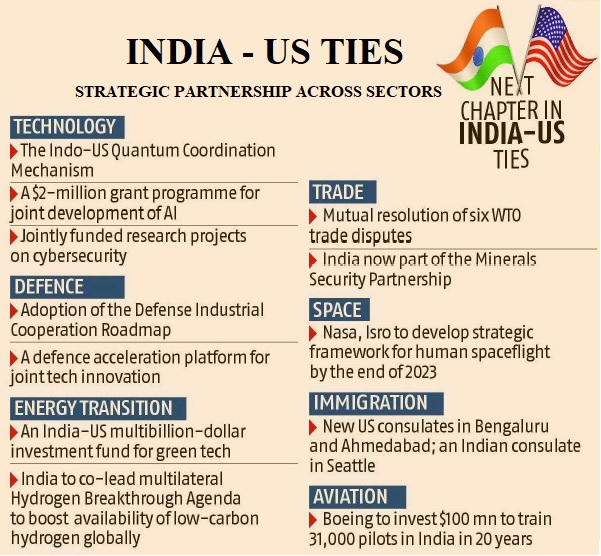
- Semiconductor Supply Chains - A MoU on Semiconductor Supply Chain and Innovation Partnership was signed between the countries.
- Critical Minerals - India became the newest partner of the U.S.’s Minerals Security Partnership (MSP) to diversify and secure critical mineral supply chains.
- Telecommunications - India and the United States launched public-private Joint Task Forces.
- India’s Bharat 6G and the U.S. Next G Alliance will co-lead this public-private research.
- Space - India has signed the Artemis Accords, a common vision of space exploration for the benefit of all humankind. To know more about this, Click here .
- Quantum tech - A Joint Quantum Coordination Mechanism was established to facilitate joint research between the public and private sectors across both countries.
- iCET - ‘ Innovation Handshake’ , a commercial Dialogue will be launched to connect each country’s start-up ecosystems, supporting U.S.-India Initiative on Critical and Emerging Technology ( iCET ).
- Civil Aviation - Air India strike a historic agreement with Boeing to acquire more than 200 American-made aircraft.
- Defence - The India-U.S. Defence Acceleration Ecosystem (INDUS-X) was inaugurated joint innovation on defense technologies integrating India’s private defense industry.
- Student Exchange - Launched a new Joint Task Force of the Association of American Universities and leading Indian educational institutions, including the Indian Institutes of Technology.
- Research - Launched a university network of Indo-U.S. Global Challenge Institutes to help create more research partnerships and exchanges in agriculture, energy, health, and technology.
- Energy - USAID signed an MOU with the Ministry of Railways to work together on Indian Railways’ target to become a “net-zero” carbon emitter by 2030.
- India and the United States committed to creating innovative investment platforms for Green Technology.
- Medicine - The U.S. National Cancer Institute through two new grants to develop an artificial-intelligence (AI)-enabled digital pathology platform.
How is India’s strategic independence and geopolitical balance?
Indo-pacific - the united states to join the indo-pacific oceans initiative, a regional initiative inaugurated by indian prime minister..
- Indian Ocean - The United States and India will hold an Indian Ocean Dialogue that convenes U.S. and Indian officials to promote greater regional coordination.
- Reiterates permanent membership in a reformed UNSC,
- Has announced support for Indian membership in the International Energy Agency (IAEA)
- Recommits to advancing Indian membership in the Nuclear Suppliers Group (NSG)
- Also President Biden has invited Prime Minister Modi to attend the APEC Summit in San Francisco in November 2023.
- The Indian Express | Highlights of PM Modi’s US visit
- The Indian Express | Modi says talks, decisions add a new chapter
- Whitehouse | Republic of India Official State Visit to the U.S.
Greedflation
Prelim bits 27-06-2023 | upsc daily current affairs.
Mobile Menu Overlay
The White House 1600 Pennsylvania Ave NW Washington, DC 20500
FACT SHEET: Republic of India Official State Visit to the United States
1. A Technology Partnership for the Future:
- Strengthening Semiconductor Supply Chains: Micron Technology, Inc. – with support from the India Semiconductor Mission – will invest more than $800 million toward a new $2.75 billion semiconductor assembly and test facility in India. Applied Materials has announced it will build a Semiconductor Centre for Commercialization and Innovation in India to further strengthen our nations’ semiconductor supply chain diversification. And, Lam Research will train 60,000 Indian engineers through its “Semiverse Solution” to accelerate India’s semiconductor education and workforce development goals. The U.S. Semiconductor Industry Association and India Electronics Semiconductor Association released an interim readiness assessment to identify near-term industry opportunities and facilitate the long-term strategic development of complementary semiconductor ecosystems.
- Critical Minerals Partnership: The United States welcomes India as the newest partner of the Minerals Security Partnership (MSP), established to accelerate the development of diverse and sustainable critical energy minerals supply chains globally through targeted financial and diplomatic support of strategic projects along the value chain. India will join 12 other partner countries, plus the European Union, in advancing our common objectives of diversifying and securing our critical mineral supply chains. The MSP was started in June 2022 with the expressed goals of exchanging information on critical mineral sector opportunities to enable diversified private sector investment and catalyze public sector financing, while adhering to high environmental, social, and governance standards to advance sustainable economic development opportunities. India’s Epsilon Carbon Limited will be investing $650 million in a greenfield electric vehicle battery component factory, hiring over 500 employees over the course of five years. When approved, this synthetic graphite anode processing facility will be the largest Indian investment in the U.S. electric vehicle battery industry in American history.
- Advanced Telecommunications: India and the United States launched public-private Joint Task Forces, one on the development and deployment of Open RAN systems and one on advanced telecoms research and development. India’s Bharat 6G and the U.S. Next G Alliance will co-lead this public-private research. This work will reduce costs, increase security, and improve resiliency of telecommunication networks. With financing from the U.S. International Development Finance Corporation, and in partnership with USAID, India and the United States are also teaming up to launch Open RAN deployments in both countries to demonstrate the scalability of this technology to enhance its competitiveness in international markets. The leaders also welcomed participation of Indian companies in the U.S. Rip and Replace Program.
- New Frontiers in Space: India has signed the Artemis Accords, which advance a common vision of space exploration for the benefit of all humankind. India joins 26 other countries committed to peaceful, sustainable, and transparent cooperation that will enable exploration of the Moon, Mars, and beyond. NASA will provide advanced training to Indian Space Research Organization (ISRO) astronauts with the goal of launching a joint effort to the International Space Station in 2024. Additionally, NASA and the ISRO are developing a strategic framework for human spaceflight cooperation by the end of 2023. India approved a $318 million investment to construct a Laser Interferometer Gravitational-Wave Observatory in India—that will work in tandem with similar facilities in the United States, Europe, and Japan to look for ripples in space-time, known as gravitational waves, that provide insights into the physical origins of the universe. Scientific payloads for the NASA-ISRO Synthetic Aperture Radar (NISAR) have been delivered to India and will be launched in 2024, and will measure Earth’s changing ecosystems like natural hazards and sea level rise. The US Geological Survey and ISRO are negotiating expanded bilateral data exchange that will enable greater insight about the earth, including for a range of applications, such as climate resiliency, sustainable development and management of natural resources, and disaster management support.
- Quantum, Advanced Computing, and Artificial Intelligence: India and the United States have established a Joint Indo-U.S. Quantum Coordination Mechanism to facilitate joint research between the public and private sectors across both our countries. The United States also welcomed India’s participation in both the Quantum Entanglement Exchange and the Quantum Economic Development Consortium, which facilitates exchanges on quantum between nations. Additionally, —the U.S.-India Science and Technology Endowment Fund launched a $2 million grant for the joint development and commercialization of Artificial Intelligence and quantum technologies, building off of the Implementation Arrangements signed by India and the United States to further support joint research on quantum, Artificial Intelligence (AI), and advanced wireless technologies. —The U.S.-India Science and Technology Endowment Fund launched a $2 million grant for the joint development and commercialization of Artificial Intelligence and quantum technologies. Through its AI Research Center in Bengaluru, Google is building models to support over 100 Indian languages, and working with the Indian Institute of Science to support open sourcing of speech data for AI models. It has also partnered with IIT Madras to establish a multidisciplinary Center for Responsible AI.
- Cutting-edge Research: India’s Department of Atomic Energy (DAE) is making a $140 million in-kind contribution to the U.S. Department of Energy’s (DOE’s) Fermi National Laboratory toward collaborative development of the Proton Improvement Plan-II Accelerator, for the Long Baseline Neutrino Facility – the first and largest international research facility on U.S. soil.
- Innovation Handshake: The U.S. National Science Foundation announced 35 joint research collaborations with the Indian Department of Science and Technology (DST). Under a new implementation arrangement between NSF and DST, both sides will fund joint research projects in computer and information science and engineering, cyber physical systems, and secure and trustworthy cyberspace. Furthermore, NSF and India’s Ministry of Electronics and Information Technology will bring fresh funding for joint projects in applied research areas such as semiconductors, next generation communication, cyber security, sustainability and green technologies and intelligent transportation systemsTo support the U.S.-India Initiative on Critical and Emerging Technology (iCET), the U.S.-India Commercial Dialogue will launch a new “Innovation Handshake” to connect each country’s start-up ecosystems. This program will address regulatory hurdles to cooperation, promote job growth in emerging technologies, and highlight opportunities for hi-tech upskilling.
- Fiber Optics Investments: India’s Sterlite Technologies Limited has invested $100 million in the construction of an optical fiber cable manufacturing unit near Columbia, South Carolina, which will facilitate $150 million in annual exports of optical fiber from India.
2. Next-Generation Defense Partnership:
- GE F414 Engine Co-Production: The United States and India welcome a groundbreaking proposal by General Electric (GE) to jointly produce the F414 Jet Engine in India. GE and Hindustan Aeronautics Limited have signed a MoU, and a manufacturing license agreement has been submitted for Congressional Notification. This trailblazing initiative to manufacture F-414 engines in India—the first of its kind—will enable greater transfer of U.S. jet engine technology than ever before.
- General Atomics MQ-9Bs: India intends to procure armed MQ-9B SeaGuardian UAVs. This advanced technology will increase India’s intelligence, surveillance, and reconnaissance capabilities.
- New Sustainment and Ship Repair: The United States Navy has concluded a Master Ship Repair Agreement (MSRA) with Larsen and Toubro Shipyard in Kattupalli (Chennai) and is finalizing agreements with Mazagon Dock Limited (Mumbai) and Goa Shipyard (Goa). These agreements will allow mid-voyage U.S. Navy ships to undergo service and repair at Indian shipyards, facilitating cost-effective and time-saving sustainment activites for U.S. military operations across multiple theaters.
- More Robust Defense Cooperation: The United States and India advanced steps to operationalize tools that will allow us to increase our defense cooperation. The United States and India resolved to strengthen undersea domain awareness cooperation. The agreement to place three Indian liaison officers in U.S. commands for the first time– deepening our partnership and critical information sharing. The United States and India have also commenced negotiations for a Security of Supply Arrangement and Reciprocal Defense Procurement Arrangement that will enable the supply of defense goods in the event of unanticipated supply chain disruptions. The United States and India finalized a Defense Industrial Cooperation Roadmap that provides policy direction to defense industries and enables co-production of advanced defense systems as well as collaborative research, testing, and prototyping of the technologies that will determine the future of military power.
- Defense “Innovation Bridge”: The India-U.S. Defense Acceleration Ecosystem (INDUS-X)—a network of university, incubator, corporate, think tank, and private investment stakeholders—was inaugurated on June 21, 2023. This innovative program will facilitate joint innovation on defense technologies and accelerate the integration of India’s budding private sector defense industry with the U.S. defense sector.
- Defense Industrial Cooperation Roadmap: A new defense industrial cooperation roadmap will provide policy direction to defense industries to enable and accelerate the co-production of advanced defense systems as well as collaborative research, testing, and prototyping of the technologies that will determine the future of military power.
3. Shared Prosperity and Delivering for our Peoples:
- Domestic Visa Renewals: The U.S. Department of State will launch a pilot this year to adjudicate domestic renewals of certain petition-based temporary work visas, including for Indian nationals, who will no longer be required to leave the country for renewal in eligible categories. The Department of State will implement this for an expanded pool of H1B and L visa holders in 2024, with the aim of broadening the program to include other eligible categories.
- New Consulates: The United States intends to open new consulates in Bengaluru and Ahmedabad. India looks forward to opening its consulate in Seattle later this year, and to announcing two new consulates in the United States.
- Student Exchanges and Scholarships: The United States last year issued 125,000 visas to Indian students, a record. Indian students are on pace to become the largest foreign student community in the United States, with a 20 percent increase last year alone. India and the United States have launched a new Joint Task Force of the Association of American Universities and leading Indian educational institutions, including the Indian Institutes of Technology. Councils on each side have prepared interim recommendations for expanding research and university partnerships between the two countries. Additional Fulbright-Kalam Climate Fellowships for research, administered by the U.S.-India Educational Fund, will advance cooperation between leading scholars in India and the United States on climate change. The United States is enabling up to 100 additional U.S. undergraduate students to study or intern in India via the Benjamin A. Gilman International Scholarship Program. New funding for Department of State Study Abroad Engagement Grants will extend new study abroad engagement grant funding to bolster Indian academic institutions’ capacity to develop study abroad programming with U.S. colleges and universities. India is also funding the establishment of a Tamil Studies Chair at the University of Houston and welcomes the appointment to the Vivekananda Visiting Professorship at the University of Chicago.
- University Research Partnerships: Leveraging the talent and ambition of both our countries, India and the United States welcomed the launch of a university network of Indo-U.S. Global Challenge Institutes , which will help create more research partnerships and exchanges in agriculture, energy, health, and technology.
- Cultural Property: The United States and India are continuing negotiations for a Cultural Property Agreement which would help to prevent illegal trafficking of cultural property from India and enhance cooperation on the protection and lawful exchange of cultural property.
- Historic Aviation Deals: Air India’s historic agreement with Boeing to acquire more than 200 American-made aircraft, announced in February 2023, will support more than one million American jobs across 44 states and contribute to the modernization of the civil aviation sector in India, which is among the fastest growing in the world. Boeing has announced a $100 million investment in infrastructure and programs to train pilots in India, which will support India’s need for 31,000 new pilots over the next 20 years. Additionally, Boeing has completed a C-17 aftermarket support facility and a new parts logistics center in India that allows the country to become a regional maintenance hub.
- Resolving Trade Issues Through Trust: The United States and India have also taken steps toward deepening bilateral cooperation to strengthen our economic relationship, including trade ties. Underscoring the willingness and trust of both countries in resolving trade issues, the leaders welcomed the resolution of six outstanding WTO disputes between the two countries through mutually agreed solutions as well as their understandings on market access related to certain products of significance to the bilateral trade relationship.
4. Leading on the Global Stage:
- Indo-Pacific: The United States will join the Indo-Pacific Oceans Initiative, a regional initiative inaugurated by Prime Minister Modi in 2015 to promote a safe, secure, and stable maritime domain and promote its conservation and sustainable use. India will continue to participate as an observer in the Partners in the Blue Pacific.
- Indian Ocean: The United States and India will hold an Indian Ocean Dialogue that convenes U.S. and Indian officials, with experts and stakeholders from across the Indian Ocean region to promote greater regional coordination.
- Global Cooperation: Welcoming its relaunch in December 2022, the United States and India intend to hold another Global Issues Forum meeting this year to collaborate on global challenges such as human trafficking, food insecurity, and humanitarian disaster relief.
- Enhancing India’s Role in Global Governance: The United States reiterates its support for India’s permanent membership in a reformed UNSC, has announced support for Indian membership in the International Energy Agency, recommits to advancing Indian membership in the Nuclear Suppliers Group, and President Biden has invited Prime Minister Modi to attend the APEC Summit in San Francisco in November 2023.
- Digital Partnership: The United States and India will develop a U.S.-India Global Digital Development Partnership that will bring together technology and resources from both countries to address development challenges in emerging economies.
- “Triangular” Cooperation Partnership: The U.S. Agency for International Development and Ministry of External Affairs of India are working together to train health care experts from Fiji in India in the third quarter of 2023 to share knowledge and best practices on post-disaster psycho-social and telemedicine services.
5. Partnership for Sustainable Development and Global Health:
- Energy collaboration: India and the United States will continue to work together to achieve our respective national climate and energy goals under India’s National Green Hydrogen Mission and the United States’ Hydrogen Earth Shot. The United States welcomes India’s decision to co-lead the multilateral Hydrogen Breakthrough Agenda to make affordable renewable and low carbon hydrogen globally available by 2030.
- Investing in America’s Clean Energy Infrastructure: India’s VSK Energy LLC will invest up to $1.5 billion to develop a new, vertically integrated solar panel manufacturing operation in the United States, including a 2.0 GW module-and-cell manufacturing plant in Colorado. And, India’s JSW Steel USA announced a $120 million investment at its Mingo Junction, Ohio, steel plant to better support market demand for offshore wind labs.
- Investment Platforms for Green Technology: India and the United States committed to creating innovative investment platforms that will lower the cost of capital and attract international private finance at scale for renewable energy, battery storage, and emerging green technology projects in India. This first of its kind platform will create a multibillion-dollar fund aimed at providing catalytic capital and de-risking support for such projects.
- Decarbonizing our Transportation Sector: USAID signed an MOU with the Ministry of Railways to work together on Indian Railways’ target to become a “net-zero” carbon emitter by 2030. The United States and India also announced plans to create a payment security mechanism that will facilitate the deployment of 10,000 made-in-India electric buses in India, augmenting India’s focused efforts in reducing greenhouse gas emissions, improving public health, and diversifying the global supply chain.
- Biofuels Initiative: The Global Biofuels Alliance, established by India with the United States as a founding member, will facilitate cooperation in accelerating the use of biofuels.
- Coalition for Disaster Resilient Infrastructure Education Initiative: USAID has committed up to $5 million toward the Infrastructure Resilience Academic Exchange (IRAX) to offer education, research opportunities, and professional development on disaster resilient architecture and develop a global network of academic institutions. IRAX will facilitate new partnerships between American and Indian institutions of higher education across the world.
- Accelerating the Fight Against Cancer and Diabetes: The U.S. National Cancer Institute will foster collaboration between U.S. and Indian scientists through two new grants to develop an artificial-intelligence (AI)-enabled digital pathology platform. This platform will be utilized for cancer diagnosis, prognosis, and prediction of therapeutic benefit, as well as AI-based automated radiotherapy treatment for cancers of the cervix, head, and neck. The U.S. National Institute of Diabetes and Digestive and Kidney Diseases will also sign an agreement with the Indian Council of Medical Research to further basic, clinical, and translational research on diabetes. The United States and India will hold a U.S.-India Cancer Dialogue, hosted by President Biden’s Cancer Moonshot, to bring experts together from both countries to identify concrete areas of collaboration to accelerate the rate of progress against cancer.
- Counternarcotics Cooperation: The United States and India are developing a broader and deeper bilateral counternarcotics framework to disrupt the illicit production and international trafficking of illicit drugs, including synthetic drugs, fentanyl, and precursors, and will showcase a secure, resilient, reliable and growing pharmaceutical supply chain as a model for the world.
Stay Connected
We'll be in touch with the latest information on how President Biden and his administration are working for the American people, as well as ways you can get involved and help our country build back better.
Opt in to send and receive text messages from President Biden.

India-US jet engine deal is revolutionary, says Defence Secretary Austin

WASHINGTON: The India-US deal to jointly produce fighter jet engines for the Indian Air Force is revolutionary, US Defence Secretary Lloyd Austin has told lawmakers, as he hailed the "great relationship" with India.
The landmark deal was announced last June during the historic Official State Visit of Prime Minister Narendra Modi to the US.
General Electric signed a memorandum of understanding with Hindustan Aeronautics to co-produce F-414 fighter jet engines in India.
According to provisions of the deal, GE Aerospace's F414 engines will be co-produced in India to power Tejas light combat aircraft Mk2.
Austin told the House Appropriations Subcommittee on Wednesday that the United States has a "great relationship" with India.
"We recently have enabled India to produce a jet weapon, a jet engine in India. And that's kind of revolutionary. That will provide a great capability to them. We are also co-producing an armoured vehicle with India," he said.
"So, all of these things, when you add them up, are probably more than we have seen happen in that region in a very, very long time," Austin said.
Follow The New Indian Express channel on WhatsApp
Download the TNIE app to stay with us and follow the latest
Related Stories
- LIVE DISCOURSE
- BLOG / OPINION
- SUBMIT PRESS RELEASE
- Advertisement
- Knowledge Partnership
- Media Partnership
Defence Secretary hails India-US jet engine deal as game-changing
The india-us deal to jointly produce fighter jet engines for the indian air force is revolutionary, us defense secretary lloyd austin told lawmakers on wednesday.the landmark deal was announced last june during the historic official state visit of prime minister narendra modi to the us..
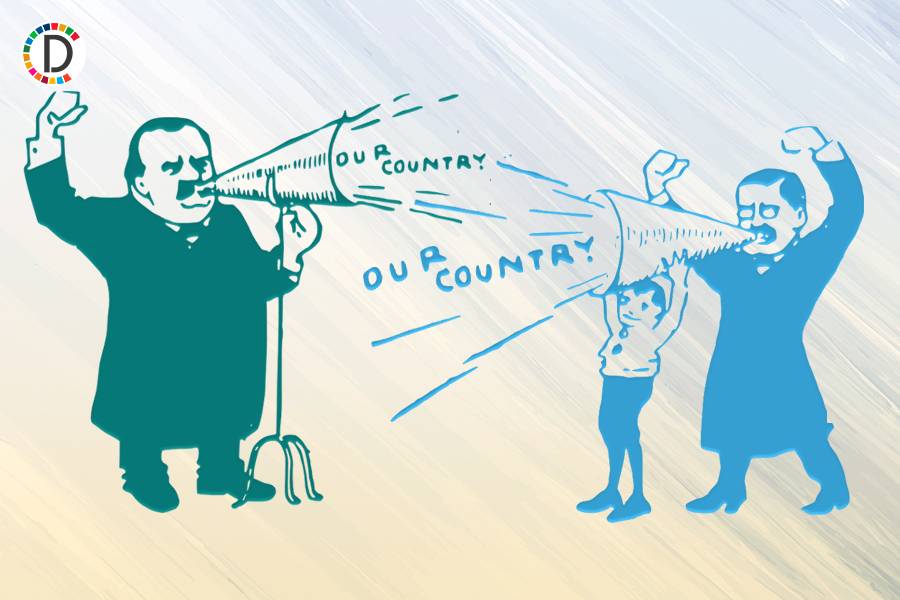
- United States
The India-US deal to jointly produce fighter jet engines for the Indian Air Force is revolutionary, US Defense Secretary Lloyd Austin told lawmakers on Wednesday.
The landmark deal was announced last June during the historic Official State Visit of Prime Minister Narendra Modi to the US. The General Electric signed a memorandum of understanding with Hindustan Aeronautics to make fighter jet engines for the IAF.
Austin told the House Appropriations Subcommittee that the United States has a "great relationship" with India.
"We recently have enabled India to produce a jet weapon, a jet engine in India. And that's kind of revolutionary. That will provide a great capability to them. We are also co-producing an armoured vehicle with India,'' he said.
''So, all of these things, when you add them up, are probably more than we have seen happen in that region in a very, very long time," Austin said.
Indian talent in IT sector will play important role in bringing jobs to India: Anurag Thakur
Indian-origin singaporean minister emphasises importance of introducing children to tamil language, indian child sex offender arrested after maryland courts give light sentences: ice, 'no ground' for indian request for return of kachchatheevu: lanka minister, india continues to be largest recipient of remittances, says rbi governor shaktikanta das..

Health News Roundup: J&J wins trial over Florida woman who claimed its baby ...

Health News Roundup: USDA confirms cow-to-cow transmission a factor in bird ...

STOXX 600 hits one-month low on geopolitical woes; L'Oreal shines

LS polls phase one: Sadhguru casts his vote in Coimbatore
Latest news, vinesh, reetika, mansi and anshu make strides towards paris olympics qualification, boys perform better than girls in class 10 board exams in assam, madhya pradesh: several congress leaders, including ex-mla, join bjp amid lok sabha polls, restoration of indian economy since 2014 is a case study for harvard business school: nirmala sitharaman.

OPINION / BLOG / INTERVIEW
Sustainable tech: innovations in green computing and energy efficiency, vertical cities: architectural innovations and the future of urban living, the intersection of artificial intelligence, automation, and human contribution, the digital divide in urban areas: addressing connectivity and accessibility, connect us on.
- ADVERTISEMENT
- KNOWLEDGE PARTNERSHIP
- MEDIA PARTNERSHIP
- Agro-Forestry
- Art & Culture
- Economy & Business
- Energy & Extractives
- Law & Governance
- Science & Environment
- Social & Gender
- Urban Development
- East and South East Asia
- Europe and Central Asia
- Central Africa
- East Africa
- Southern Africa
- West Africa
- Middle East and North Africa
- North America
- Latin America and Caribbean
OTHER LINKS
- Write for us
- Submit Press Release
- Opinion / Blog / Analysis
- Business News
- Entertainment News
- Technology News
- Law-order News
- Lifestyle News
- National News
- International News
OTHER PRODUCTS
Email: [email protected] Phone: +91-720-6444012, +91-7027739813, 14, 15
© Copyright 2024
Advertisement
Supported by
Biden and Kishida Agree to Tighten Military and Economic Ties to Counter China
President Biden is hosting Japan’s prime minister, Fumio Kishida, for a state visit as part of a broad diplomatic outreach.
- Share full article

By Peter Baker and Michael D. Shear
Reporting from the White House Rose Garden
President Biden and Prime Minister Fumio Kishida of Japan announced a range of moves on Wednesday to further enhance military, economic and other cooperation between the two longtime allies as part of the president’s efforts to counter China’s aggressive actions in the Indo-Pacific region.
During a pomp-filled ceremony honoring the visiting Japanese prime minister, the president said the United States and Japan would create an expanded defense architecture with Australia, participate in three-way military exercises with Britain and explore ways for Japan to join a U.S.-led coalition with Australia and Britain.
Mr. Biden also announced that the United States would take a Japanese astronaut to the moon as part of NASA’s Artemis program, which would be the first time a non-American has set foot on the moon.
“This is the most significant upgrade of our alliance since it was first established,” Mr. Biden said at a news conference in the White House Rose Garden along with the prime minister.
Mr. Kishida made a point of reaffirming Japan’s “strong support for Ukraine” in its war against Russia, a key priority for Mr. Biden, and framed the European conflict in terms of the precedent it could set in Japan’s neighborhood. “Ukraine today may be East Asia tomorrow,” Mr. Kishida said.
Biden Hosts Japan’s Prime Minister at the White House
President biden called the united states and japan “the closest of friends” during a welcoming ceremony for prime minister fumio kishida..
Just a few generations ago, our two nations were locked in a devastating conflict. It would have been easy to say we remain adversaries. Instead, we made a far better choice: We became the closest of friends. Mr. Prime Minister, Mr. Kishida, welcome back to the White House.

Mr. Biden’s statements on Wednesday fit into a long history of American presidents declaring that the U.S.-Japan relationship was the most important bilateral alliance in the world.
In preparation for the state visit, Mr. Biden’s aides described the closer military link as one of the biggest upgrades of the U.S.-Japan Security Treaty, which dates back to early 1960, an Eisenhower-era innovation to turn a former World War II enemy into what later presidents called America’s “biggest aircraft carrier in the Pacific.”
There has always been a bit of hyperbole to the statement. But as the perceived threat from China has grown, Japan has been the linchpin of broader U.S. efforts to unify its separate allies in the region — especially South Korea and the Philippines — into a coordinated force.
The prime minister’s visit comes at the same time Mr. Biden is strengthening the American partnership with the Philippines, which also finds itself the target of a mounting Chinese military presence in the South China Sea. On Thursday, Mr. Biden and Mr. Kishida will meet with President Ferdinand Marcos Jr. of the Philippines to demonstrate their joint commitment.
The day began with a welcoming ceremony on the South Lawn, where Mr. Biden hailed the relationship between the United States and Japan as a “cornerstone of peace, security, prosperity” and said that President Eisenhower’s promise of an “indestructible partnership” had been achieved.
“Just a few generations ago, our two nations were locked in a devastating conflict,” Mr. Biden said after he and Mr. Kishida watched a procession of U.S. military honor guards upon the prime minister’s arrival at the White House. “It would have been easy to say we remain adversaries. Instead, we made a far better choice: We became the closest of friends.”
The Biden administration signaled the importance of its relationship with Tokyo by holding an official state dinner on Wednesday evening in honor of Mr. Kishida, something reserved for America’s closest allies.
The visit comes amid hand-wringing in Washington and Tokyo over the possibility of a return to power by former President Donald J. Trump, whose unpredictable foreign policy kept many world leaders on edge. One goal for Mr. Biden, officials said, is to create as much permanence in the Japanese relationship as possible before the election in November.
One administration official, speaking on the condition of anonymity to discuss the upcoming meeting, said there was “anxiety in capitals” around the world, including in Tokyo, about whether Mr. Trump would continue the international engagement that Mr. Biden and prior presidents have embraced. Another official said there was a real risk that Mr. Trump, if re-elected, could move to undo what the leaders of the two countries announced on Wednesday.
Mr. Biden and Mr. Kishida outlined greater coordination and integration between the military forces of both countries, including the formation of a joint defense council that could support more defense-related exports of equipment produced in Japan. And officials agreed on new cooperation on ventures in space and collaboration between research institutions working on artificial intelligence, semiconductors and clean energy.
“The American alliance system has helped bring peace and stability to the Indo-Pacific for decades, and now we need to update and upgrade that alliance network for the modern age,” said Jake Sullivan, the White House national security adviser. “It goes way beyond security. It’s economics. It’s technology. It’s infrastructure development. And it’s diplomacy. And that’s all going to be on display in the meeting with the prime minister.”
Rahm Emanuel, the United States ambassador to Japan, called the meeting a chance for the two nations to go beyond America’s work to protect Japan and to “write the first chapter of the next era” of cooperation as they work together to project power throughout the region.
That would be a more far-reaching relationship than the United States has historically had with Japan, which for decades after World War II restricted its spending on defense and its engagement around the world.
That began to change during the past several years, under Mr. Kishida, who pushed to expand defense spending and participate in global efforts like the sanctions on Russia for its invasion of Ukraine. Administration officials said Japan’s new willingness to become a full partner with the United States on the global stage has taken the alliance between the two countries to a new level.
But there are still some tensions. The two leaders had to dance carefully around Mr. Biden’s reluctance to let a Japanese firm buy a storied U.S. steel maker. That struck national security experts as strange, since such deals are usually blocked only when they give critical technology to adversaries, not allies.
“The idea that you block the acquisition of a company by one of your closest allies makes no sense in alliance-building terms,” said Joseph S. Nye Jr., an emeritus professor at Harvard who designed many of the defense cooperation strategies with Japan in the Clinton administration.
The meeting on Thursday between Mr. Biden, Mr. Kishida and Mr. Marcos represents a more aggressive effort by the United States and its allies to isolate China — rather than allowing the Chinese leadership to intimidate and isolate its neighbors in the South China Sea and elsewhere.
The Thursday meeting will be the first time that the leaders of the three nations have met together, officials said.
“We’re continuing to deepen our cooperation with our closest partners to ensure what we’ve talked about many times from this podium and elsewhere: a free, open and prosperous Indo Pacific,” Mr. Sullivan told reporters during a briefing at the White House on Tuesday.
Mr. Sullivan declined to say whether Mr. Biden would raise with Mr. Kishida the issue of plans by Nippon Steel, a Japanese corporation, to acquire U.S. Steel , the struggling manufacturer based in Pittsburgh. Mr. Biden has publicly said that he will have “the backs” of union steel workers, indicating his opposition to the deal.
“You guys all know Joe Biden,” he said. “You’ve seen Joe Biden. He’s been very clear that he’s going to stand up for American workers. He’s going to defend your interests. He’s also been very clear that he is going to make sure that the U.S.-Japan alliance is the strongest it’s ever been.”
But administration officials said later on Tuesday that they did not think the subject would come up between the two leaders on Wednesday because both men already know the position of the other.
Mr. Biden greeted Mr. Kishida on Tuesday evening for a brief arrival at the White House. Later, the two leaders and their wives went to BlackSalt, an upscale seafood restaurant in Washington, for a more casual dinner ahead of the formal events on Wednesday.
White House officials said the couples had exchanged a series of gifts on Tuesday evening, a diplomatic tradition for such events. The official gift from Mr. Biden and Jill Biden, the first lady, was a three-legged table that was handmade by a Japanese American-owned company in Pennsylvania.
Other gifts included a lithograph and a two-volume LP set autographed by Billy Joel and a vintage vinyl record collection. Dr. Biden gave Ms. Kishida a framed painting of the Yoshino cherry tree that the two had planted on the South Lawn last spring, and a soccer ball signed by the U.S. women’s national soccer team and the Japanese women’s team.
At the state dinner, the White House was scheduled to serve a meal that would include house-cured salmon and dry-aged rib-eye steak with blistered shishito pepper butter.
David E. Sanger contributed reporting.
An earlier version of this article misstated which countries belong to a security pact that Japan may join. Its members are the United States, Australia and Britain, not the United States, Australia and New Zealand.
Because of an editing error, an earlier version of a home page headline with this article misstated the surname of Japan’s prime minister. He is Fumio Kishida, not Fushida.
How we handle corrections
Peter Baker is the chief White House correspondent for The Times. He has covered the last five presidents and sometimes writes analytical pieces that place presidents and their administrations in a larger context and historical framework. More about Peter Baker
Michael D. Shear is a White House correspondent for The New York Times, covering President Biden and his administration. He has reported on politics for more than 30 years. More about Michael D. Shear
Indian election: Prime Minister Modi's BJP seeks supporters in the U.S.
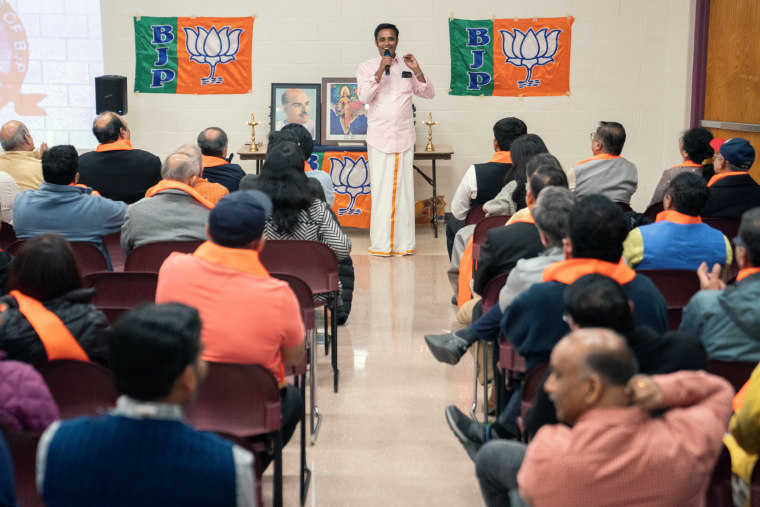
This week the world’s biggest democratic election kicks off in India, as almost 970 million voters decide whether to give Prime Minister Narendra Modi a third term. The election will last six weeks after a campaign that has sprawled across India — and into the United States as well.
Modi’s supporters credit him with putting India on the global stage and turning it into one of the fastest-growing economies in the world . His critics, however, say Modi has fanned a wave of Hindu nationalism , cracked down on opponents, stifled press freedom and stoked religious tensions with Muslims and other minority groups.
In the weeks leading up to the election, which begins Friday, the overseas arm of Modi’s Bharatiya Janata Party (BJP) has enlisted members of the Indian diaspora in the U.S. to campaign on his behalf, either by phone calling friends and family in India or by traveling to India themselves.
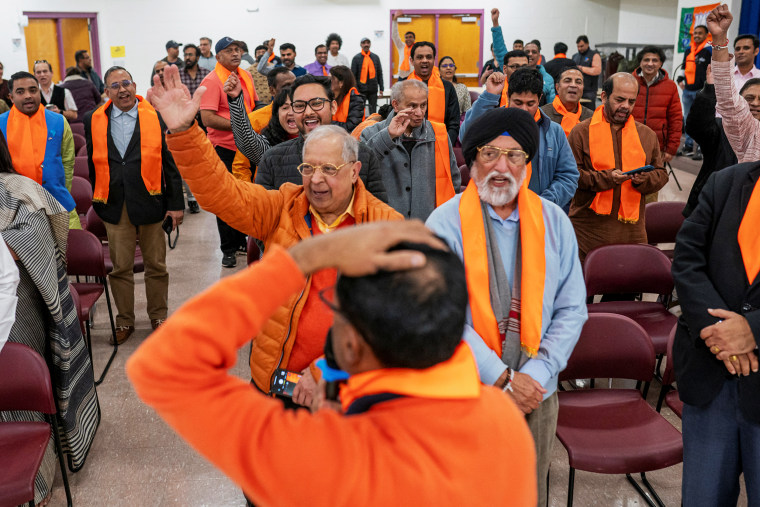
More than 60 Modi supporters turned up to an event at the Potomac Community Center in Maryland last month, many of them wearing scarves of saffron, a color associated with Hindu nationalism.
At the event, leaders of the Overseas Friends of BJP listed what they saw as Modi’s achievements since taking office in 2014: developments in infrastructure, pharmaceuticals, technology and education and, more recently, the inauguration of a grand Hindu temple on a contested holy site.
Attendees were urged to use these as talking points to nudge friends and family in India to vote for Modi, and many stood ready to help.
“Especially when they see me, that I’m from [the] United States, it carries a weight,” said Kanwaljit Soni, OFBJP’s coordinator for the Sikh community, who was planning to travel to India to campaign ahead of the election, which runs from April 19 to June 1.
It’s a familiar routine for him. During the last election, in 2019, he said, he spent three weeks in India traveling from village to village to encourage people to vote for the BJP.
“I will be going to where my roots are in the different states,” he said.
Aware of the gargantuan task of defeating Modi, the fractured opposition has tried to consolidate into a single coalition by fielding a single candidate against the BJP. But many candidates have already switched to the BJP or backed out of the coalition.
“It’s no longer party versus party. It’s a person against a person, and there is no other credible person with a national stature like Modi,” said Sanjoy Chakravorty, a professor of geography, urban studies and global studies at Temple University in Philadelphia and the author of “The Truth About Us: The Politics of Information From Manu to Modi.”
The opposition has been further constrained by what it says are strong-arm tactics by Modi and his government. Dozens of opposition politicians have been jailed or are under investigation, and there were protests last month when Arvind Kejriwal, the chief minister of Delhi, was arrested in connection with corruption allegations that he denies.
Last month, Modi’s government froze the bank accounts of the main opposition party, the Indian National Congress, in a tax dispute. The party said the move was politically motivated and hindered its ability to campaign.
Modi has said that India’s democracy remains robust and that there is “absolutely no discrimination.” His government says the Congress party fears a historic defeat and that its accounts were frozen because it failed to file tax returns for past donations.
The Congress party has also tried to mobilize support among Indian Americans with rallies across the U.S., arguing that India cannot afford a third Modi term.
“Democracy is under an existential crisis in India right now and people are afraid to speak out,” said George Abraham, vice president of the Indian Overseas Congress.
But it is hard to compete with Modi, who experts say has built the narrative of being a “great leader,” his face appearing everywhere in India from outdoor displays to vaccination certificates. That has extended abroad to the Indian diaspora in the U.S., which has never been more passionate about politics at home.
Modi’s state visit to Washington last year drew a few hundred protesters, but thousands of South Asians also flooded the city’s landmarks, either to support him or just to revel in the historic moment.
“It’s the convergence of the whole nation into a person,” Chakravorty said.
Adapa Prasad, president of Overseas Friends of BJP, said the group aimed to reach almost 50,000 members of the Indian diaspora in the U.S., with the goal of helping Modi and the BJP secure a landslide victory.
And Maryland was just the first stop.
The group planned to hold pre-election rallies in 20 U.S. cities, modeled after Modi’s “Chai Pe Charcha,” or “discussions over tea” — televised programs in which he discusses various issues with citizens and top leaders.
There are an estimated 4.4 million people of Indian origin living in the U.S., making them the largest Asian American group , according to the Census Bureau. While many are U.S. citizens, barring them from voting in Indian elections, they may still have family links in India.
For those unable to travel to India, there is also the option of campaigning by phone, Prasad said.
People who are “sympathetic to BJP” will call their relatives in India and urge them to vote, he said.
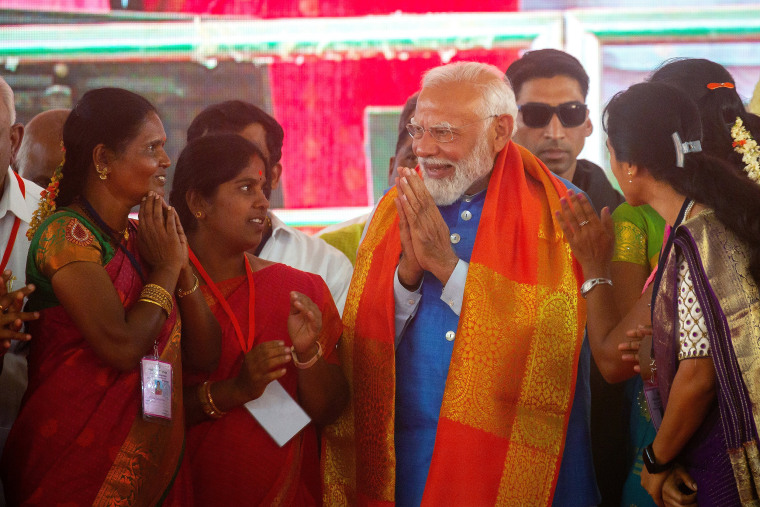
India has a multiparty parliamentary system in which the candidate who receives the most votes in their home constituency wins. The party with the biggest share of candidates in the Legislature gets to pick the prime minister. Even though Modi’s party received 37% of the votes in 2019, it won 303 out of the 543 seats.
Flanked by almost a dozen party flags, supporters in Maryland chanted “Victory of Mother India” and, “This time, above 400” in Hindi, referring to the BJP’s goal of securing more than 400 seats.
Calling Modi a “sensible leader,” Peeyush Uniyal, who is originally from the northern Indian state of Uttarakhand and now lives in Ellicott City, Maryland, said that “especially from the development point of view, I think it becomes a no-brainer.”
He dismissed concerns about the rise of Hindu nationalism as “overblown.”
Virginia resident Upasana Dhankhar said it was her first time venturing into politics. “It’s the consistency of leadership,” said Dhankhar, a former professor of Indian history.
She moved to the U.S. in 2019, the same year Modi revoked the Indian Constitution’s Article 370, which granted semiautonomous status to Kashmir, India’s only Muslim-majority region. The widely criticized move in the disputed territory was followed by the arrival of thousands of troops and a six-month communications blackout.
“Resolving the Kashmir problem was a big thing,” Dhankhar said, mirroring an argument from a PowerPoint slide titled “Article 370 SCRAPPED.”
The BJP’s campaign in the U.S. was another way of revving up Modi’s global fanbase, Chakravorty said.
“The entire civilization is on the rise,” he said, “and they want to be part of it.”
CORRECTION (April 16, 2024, 1:55 p.m. ET): Because of an editing error, the headline on a previous version of this article misstated Narendra Modi’s position. He is prime minister, not president.
Mithil Aggarwal is a Hong Kong-based reporter/producer for NBC News.
Megan Lebowitz is a politics reporter for NBC News.
- International edition
- Australia edition
- Europe edition
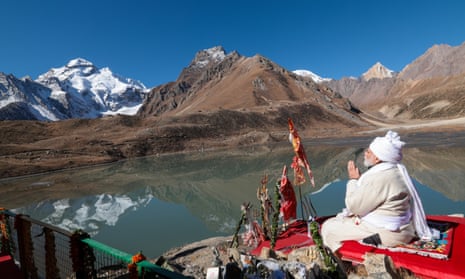
‘I was told I’d be killed if I didn’t leave’: Himalayan state is a testing ground for Modi’s nationalism
A region known as ‘God’s land’ offers a glimpse of the future if Indian prime minister’s BJP party retains its power
F or centuries it has been known as the “land of the gods”. Stretching high up into the Himalayas, the Indian state of Uttarakhand is home to tens of thousands of Hindu temples and some of the holiest Hindu pilgrimage sites.
Yet as Hindu nationalism has become the dominant political force in India under prime minister Narendra Modi over the past decade, the government is accused of weaponising Uttarakhand’s sacred status for politics, making the state a “laboratory” for some of the most extreme rightwing policies and rhetoric targeting the Muslim minority.
As India’s mammoth election starts on 19 April, stretching across a six-week period, Modi and his Bharatiya Janata Party (BJP) are expected to return to power. Over the past decade, as India has grown to become the world’s fifth-largest economy, Modi’s government stands accused by rights groups of growing authoritarianism and pursuing Hindutva [Hindu-first] policies that have eroded the rights and freedoms of minorities, in particular India’s 200 million Muslims.
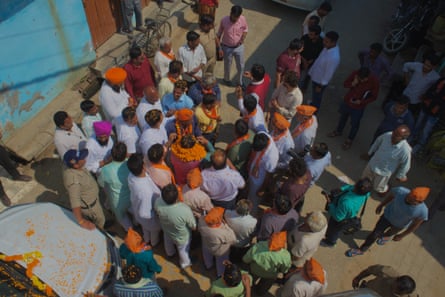
The BJP is expected to march on with its Hindutva agenda if re-elected. While Modi has denied allegations that it will rewrite the secular constitution to enshrine India as a Hindu-first country, political observers have pointed to Uttarakhand as a stark window on what a Modi third term could mean for India’s fragile secular democracy.
It was in 2021 in Haridwar, Uttarakhand’s holiest city, that a gathering known as a dharma sansad , or religious parliament, was organised by hardline Hindu groups and attended by BJP figures. Here, Hindu priests made explicit threats against Muslims in the state, calling to “kill 2 million” of them, and stating Hindus should be “prepared to die or be prepared to kill”.
The call made in one of the speeches for every Hindu to “participate in this cleansing” prompted warnings from an internationally renowned genocide expert that “a possible Muslim genocide” could be impending in India. It was not the first time many of these rightwing Hindu priests and leaders had made calls to violence against Muslims, and the outrage that followed led to several of them being arrested. They were all soon released on bail.
It was at the Haridwar gathering that the idea of Uttarakhand being a Hindu Dev Bhoomi , [God’s land], began to gain public prominence: that of a holy state just for Hindus, where Muslims had no right to exercise their religion or, in the eyes of some, exist at all. The same priests who took part in the dharma sansad warned that “ Dev Bhoomi has come under the control of jihadis”, a thinly veiled slur for Muslims, and called for the state to be protected by any means necessary.
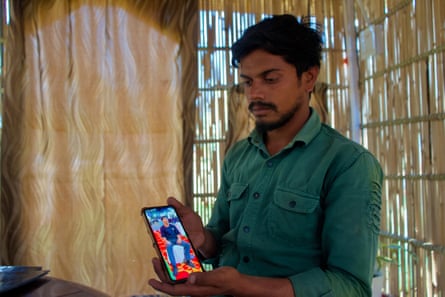
“Just like only Muslims are allowed in Mecca and Medina due to Islamic tradition, we also demand this land be exclusively for Hindus,” Swami Darshan Bharti, president of Devbhoomi Raksha Abhiyan, the organisation behind the Haridwar event, told the Observer .
“Muslims can stay here and work freely, but they should respect our religion. They can’t chant Allahu Akbar; we can’t tolerate that. Halal meat also should not be allowed in Uttarakhand.”
Uttarakhand is known as a place of rugged natural beauty, stretching from Haridwar and Rishikesh, which thrum with pilgrims and travellers, to remote villages far up in the Himalayas, peaks which Hindus believe are the abodes of their gods.
India’s sacred river, the Ganges, takes shape in Uttarakhand, and flows through the state in many tributaries. It is visited every year by tens of millions of Hindu pilgrims who climb up to four of their holiest temples – Badrinath, Kedarnath, Gangotri and Yamunotri – to seek salvation. On government signs in the state, visitors are often welcomed to “God’s land”.
The BJP has ruled the Uttarakhand state government since 2017, during which time the idea of a Hindu-first state gained political traction. Bharti said “the BJP government has worked to a great extent for Dev Bhoomi” and claimed the state had acted on several of their demands.
In 2022, laws were passed against religious conversion to counteract so-called “love jihad” – an unfounded conspiracy suggesting that Muslim men were tricking Hindu women into marrying them and forcibly converting them to Islam – which resulted in Muslim men being targeted by police.
In a bid to crack down on “land jihad”, another unproven conspiracy that Muslims were stealing state land to build mosques and property, the state began a demolition drive against Muslims’ places of worship.

Even after the policy was officially halted, over the past two years hundreds of mosques, Muslim shrines and tombs have been flattened. Rightwing Hindu vigilante groups and social media influencers have also been demolishing shrines and smashing Muslim graves across the state.
Recently, Uttarakhand became the first state in India to impose a uniform civil code – overriding decades of religions being allowed to follow their own cultural laws on issues such as marriage and inheritance – which scholars fear will be used to target Muslim cultural and religious freedoms. The BJP has pledged to introduce it nationally if re-elected.
The establishment and protection of Uttarakhand as a Hindu-first state has also played a role in the election campaign, where it was directly mentioned by the BJP chief minister in a rally speech. The BJP is expected to win most, if not all, the parliamentary seats in Uttarakhand, which is almost 85% Hindu.
Akhilesh Kumar, 52, a wheat and sugarcane farmer from the small village of Puranpur, who was attending a local BJP rally, said he used to vote for the opposition Congress party until the BJP had “awoken” him to his religion and the “importance of protecting our Dev Bhoomi from Muslim evils, like love jihad”.
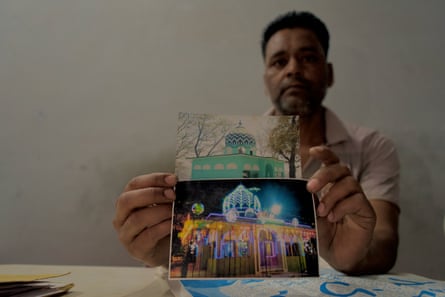
“For too long Muslims have been allowed to be devils, they are uncultured and disrespectful and malicious towards Hindus in this holy state,” said Kumar. “But we’ve been brought together against Muslims under Modi. It is only right that India becomes a Hindu country for Hindus – in fact, it is our demand.”
after newsletter promotion
Among swathes of the Muslim community in the state, the prospect of a Modi third term was spoken about with trepidation. The fear was palpable in Haldwani, a small ramshackle city in Uttarakhand which has an unusually high proportion of Muslim residents and in February experienced some of the worst violence the state had seen in years. The clashes began after the state authorities demolished a local mosque and madrasa as part of their drive against “land jihad”, allegedly without court permission. Local Muslims gathered in the aftermath to protest, and were charged at by police with wooden batons. Stones and petrol bombs were reportedly thrown at officers in retaliation.
The Uttarakhand chief minister issued the police with “shoot to kill” orders against alleged rioters. Five Muslims and one Hindu were killed, both by police but also allegedly by local Hindu rioters, though no one has been charged.
Police called the five Muslims shot dead “rioters”, though this claim was rejected by relatives of four of the men who spoke to the Observer . Several locals alleged that the police stood by as local Hindus set fire to Muslim houses and cars and smashed windows following the demolition, and claimed some officers took part in the vandalism.
Among the dead was Mohammad Zahid, who had gone out to buy milk for his baby grandson when he was shot in the chest by police, and his 18-year-old son, Mohammed Anas.
Mohammad Aman, 21, described finding his father lying in the gutter after being shot, barely alive. Aman alleged he tried to take his father to a hospital on the back of a fruit cart, but more than 20 police descended on them.
“We tried to throw ourselves on top of my father to stop them hitting him. He didn’t survive for long after that,” said Aman. He was among many who claimed that local Muslim families were harassed, tortured and rounded up by police.
Aman said no proper investigation was being carried out into the police killings. “Across the state Muslims are being stripped of their rights. Our future is stark,” he said. “Look how easily they could kill my father and brother with no consequences. We are all afraid it will only get worse if Modi comes back. We have no way to defend ourselves.”
Pervez Qureshi, 38, claimed his younger brother, Faheem, was not killed by police but shot by a local Hindu man, allegedly abetted by police, who that night set fire to their house. Qureshi said he had five eyewitnesses to the shooting, but it was being covered up by police.
“The police want to brand Muslims as rioters and are shielding my brother’s killers,” he said. “We’re trying to move out of the area, we don’t feel safe any more. All this is done for politics, to serve the BJP.”
Uttarakhand police have denied all the allegations, stating that they were “committed to carrying out an unbiased investigation”.
Muslims living in Purola, a lively market town in the foothills, said they too had been driven out after rightwing groups led a coordinated economic boycott of Muslim businesses. After rumours of a “love jihad” case began to spread in May, Muslims shopkeepers living there woke to find their shops branded with large red Xs and received notices and threats from rightwing Hindu vigilante group Bajrang Dal and other local radical Hindu outfits.
“A leader of Bajrang Dal warned that my shop would be set on fire and I’d be killed if I didn’t leave,” said Salim Ahmad, 36, who had owned a textile shop in Purola since 2002. “I had to leave within three days. I have lost everything. It has become impossible for Muslims to live in Purola now.”
While a few of the shopkeepers returned – agreeing, among other things, to no longer offer prayers in the town – Vikas Verma, a local leader of Bajrang Dal, said he was continuing his fight to drive out any remaining Muslim businesses.
“Love jihad and violent thinking among Muslims have taken on a new pace,” said Verma. “Why should Hindus contribute to the Muslim economy, which is spent on jihadi activities and building mosques?”
Yet on the campaign trail with Ajay Batt, the incumbent Uttarakhand BJP MP whose constituency includes Haldwani, both Hindus and Muslims attended his rallies. In Raipur, a dusty, undeveloped village, many Muslim households said they would vote for BJP.
“They’ve brought us better development than Congress and it makes less trouble for us to vote BJP,” said tailor Irfan Ahmed, 43. “We don’t like what is happening to Muslims but Modi is a good, strong leader. I just hope the Muslims are protected.”
- The Observer
- Narendra Modi
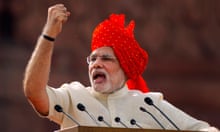
‘Messianic spell’: how Narendra Modi created a cult of personality

Six weeks, 969 million voters, 2,600 parties: India’s mammoth election explained
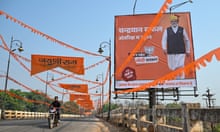
Voting begins in India’s election with Modi widely expected to win third term

The Guardian view on India’s election: fixing a win by outlawing dissent damages democracy

‘BJP v democracy’: India’s opposition alliance cries foul as election nears
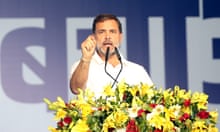
India’s opposition protest against Modi’s ‘match-fixing’ before election
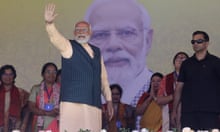
India to hold world’s biggest election in seven stages from April
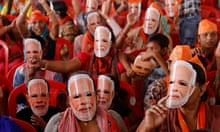
A nagging doubt plagues world leaders wooing India: whose side is Narendra Modi really on?
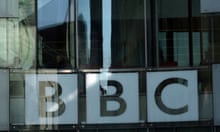
BBC to split India operations following raids
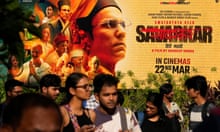
‘Brazen propaganda’: pro-Modi films flood Bollywood before India election
Most viewed.

IMAGES
VIDEO
COMMENTS
Manuel Balce Ceneta/AP. President Joe Biden rolled out the red carpet Thursday for Prime Minister Narendra Modi of India for the third state visit of his presidency. The visit will put on full ...
Prime Minister Narendra Modi wrapped up his state visit to the United States on Friday. The three-day state visit, his first in nine years, included at least three meetings with President Joe Biden, an address to members of the US Congress, and interactions with some of Silicon Valley's top CEOs. "Concluding a very special USA visit, where ...
Indian television heaps praise on Modi during his trip. Prime Minister Narendra Modi's visit to the United States came Doug Mills/The New York Times. "Super King of Diplomacy," read the ...
President Biden and Indian Prime Minister Narendra Modi at an arrival ceremony during a state visit on the South Lawn of the White House in Washington, D.C., on Thursday, June 22, 2023.
WASHINGTON (AP) — President Joe Biden on Thursday pronounced the U.S.-India relationship never stronger and rolled out new business deals with Indian Prime Minister Narendra Modi as human rights activists and American lawmakers questioned the administration's decision to honor the leader with a pomp-filled state visit. In a joint news conference with Modi, Biden called the relationship ...
Prime Minister Narendra Modi of India is visiting President Biden at the White House for a state visit featuring both fanfare and substance, highlighting the growing importance of the U.S.-India ...
transcript. Biden Welcomes Indian Prime Minister to the White House President Biden and Prime Minister Narendra Modi of India emphasized cooperation between the two countries during a state visit.
June 19, 2023 10:12 PM EDT. O n Thursday, U.S. President Joe Biden will meet India's Prime Minister Narendra Modi on an official state visit in Washington D.C, which includes a South Lawn ...
President Joe Biden and First Lady Jill Biden will host Prime Minister Narendra Modi of the Republic of India for an Official State Visit to the United States, which will include a state dinner ...
Modi's state visit led to positive outcomes for both India and the United States, demonstrating how important the bilateral relationship has become to the two countries. U.S. President Joe Biden ...
The administration of United States President Joe Biden is scheduled to host Indian Prime Minister Narendra Modi during an official visit later this week, as the two countries strengthen their ...
The June 20-24 visit will be Modi's sixth to the United States as India's PM, but his first official state visit to the country. Prime Minister Narendra Modi on Tuesday left for his historic state ...
India's Prime Minister Narendra Modi will meet President Biden on Thursday, with a lavish state dinner also on the schedule. That same day, Modi will address a joint session of Congress.
India's Prime Minister Narendra Modi talks with US President Joe Biden as they arrive for the first working session of the G20 leaders summit in Bali, Indonesia, Nov. 15, 2022.
"President Joe Biden and First Lady Jill Biden will host Prime Minister Narendra Modi of the Republic of India for an Official State Visit to the United States, which will include a state dinner ...
Key Points. Indian Prime Minister Narendra Modi will meet President Joe Biden on Thursday during his first state visit to the U.S. High on the agenda will be deepening of defense ties ...
Prime Minister Narendra Modi's 3-day state visit to the US has had a significant impact on India's global standing. It highlights the country's dual identity as a spiritual democracy and an economic power. The visit showcased India's cultural heritage, diplomatic prowess, and its growing influence on the world stage.
India approved a $318 million investment to construct a Laser Interferometer Gravitational-Wave Observatory in India—that will work in tandem with similar facilities in the United States, Europe ...
PM Modi addressing the Indian diaspora at the end of his three-day US visit. (Source: Prime Minister's office) PM Modi US Visit 2023 Highlights: Prime Minister wrapped up his three-day visit to the United States with an address to the Indian community members. Cheering up the crowd, he said that people of Indian origin will not have to leave the US for getting H-1B visa renewal, PTI reported.
THE WASHINGTON FOREIGN PRESS CENTER, WASHINGTON, D.C. MODERATOR: Good morning, everyone, and welcome to the Washington Foreign Press Center. My name is Zina Wolfington and thank you all for coming today. Today's briefing is a preview of the upcoming state visit of Prime Minister Narendra Modi of the Republic of India and news of the day.
Prime Minister Narendra Modi will be on a state visit to the United States on June 21-24. The state visits are usually at the invitation of the host leader, who in this case is US President Joe ...
Prime Minister Narendra Modi will travel to the US for an official state visit from June 21 to 24, where he will be hosted by US President Joe Biden at the White House.. This will be Narendra Modi's first state visit to the US during his nine-year long reign as prime minister. The last state visit to the US by an Indian was by then Prime Minister Manmohan Singh from November 23 to 25, 2009.
18 Apr 2024, 6:00 am. 1 min read. WASHINGTON: The India-US deal to jointly produce fighter jet engines for the Indian Air Force is revolutionary, US Defence Secretary Lloyd Austin has told ...
The India-US deal to jointly produce fighter jet engines for the Indian Air Force is revolutionary, US Defense Secretary Lloyd Austin told lawmakers on Wednesday. The landmark deal was announced last June during the historic Official State Visit of Prime Minister Narendra Modi to the US. The General Electric signed a memorandum of understanding ...
Prime Minister Fumio Kishida's state visit began with a welcoming ceremony on the South Lawn, where President Biden hailed the relationship between the two nations as a "cornerstone of peace ...
President Joe Biden hosts Japanese Prime Minister Fumio Kishida for a state visit, during a meeting at the Oval Office at the White House in Washington, DC, on April 10. Kevin Lamarque/Reuters. It ...
Indian Prime Minister Narendra Modi waves at a public rally at the Moulana Azad Stadium during which he inaugurated several projects in Jammu and Kashmir, in Jammu, India, Tuesday, Feb. 20, 2024 ...
This week the world's biggest democratic election kicks off in India, as almost 970 million voters decide whether to give Prime Minister Narendra Modi a third term. The election will last six ...
DEPUTY PRIME MINISTER TAMIM: (Via interpreter) In the name of God, the most merciful, the most gracious, ladies and gentleman, peace be upon you, all of you. Your Excellency, Secretary Tony Blinken, the Secretary of the United States Department of States, ladies and gentlemen, I would like to express my gratitude and thanks for the warm reception.
Yet as Hindu nationalism has become the dominant political force in India under prime minister Narendra Modi over the past decade, the government is accused of weaponising Uttarakhand's sacred ...